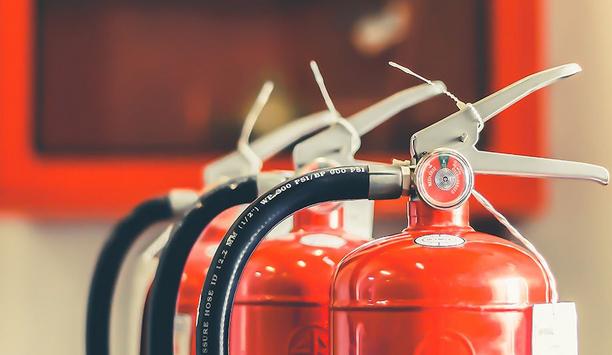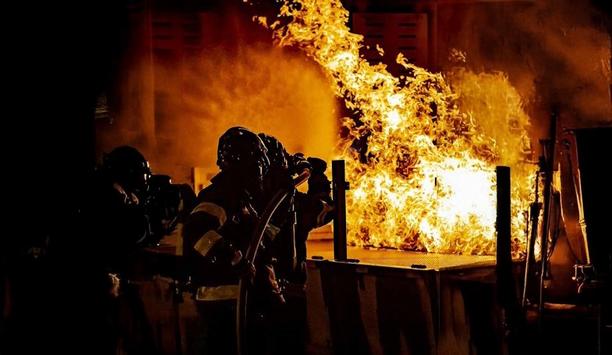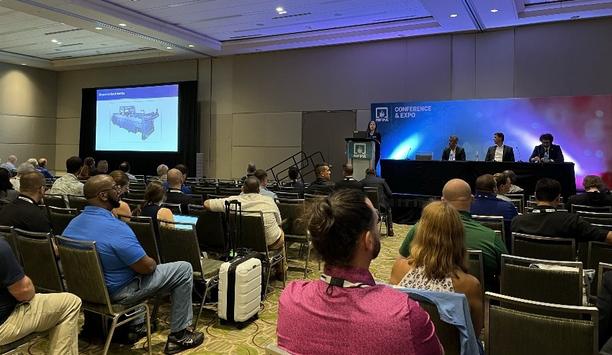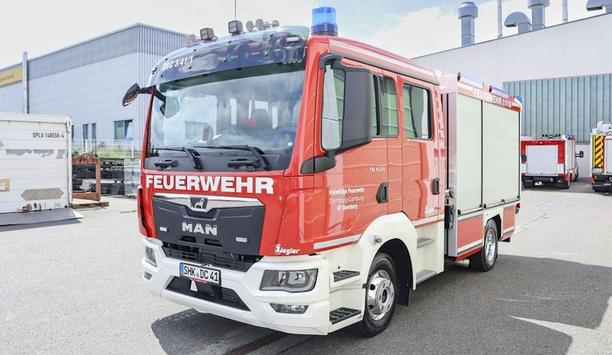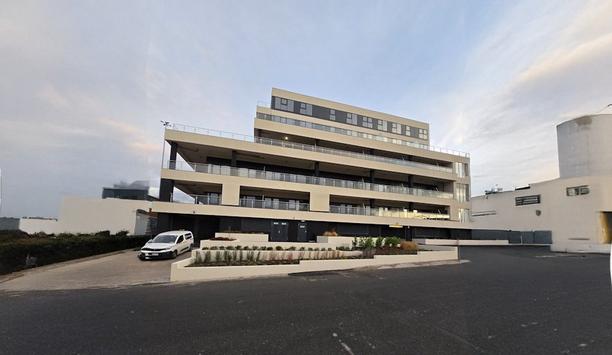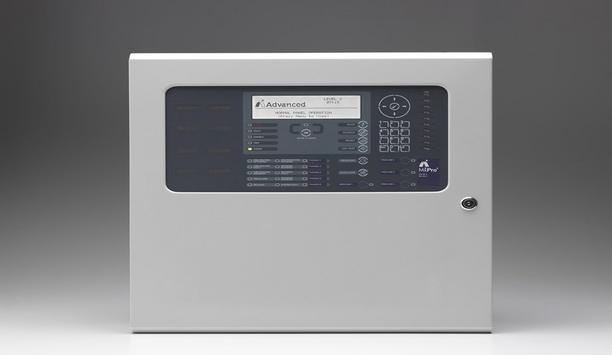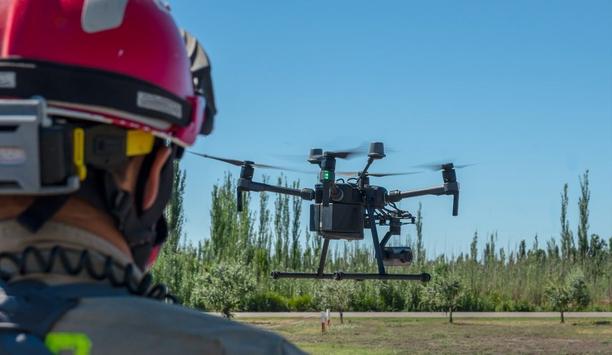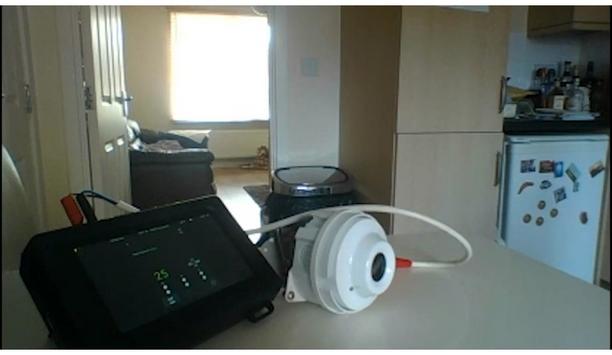Tall Building Fire Safety
Nearly a decade has passed since the devastating Grenfell Fire, and still the UK construction industry finds itself grappling with the imperative of ensuring fire safety standards in residential buildings. A key issue is the gathering, administration and distribution of up-to-the-minute, whole-life building data; vital information, for safeguarding residents during emergencies. Despite the urgent need, information voids and data deserts continue to plague the built environment. Notably in olde...
The Fire Industry Training Academy (FITA) is the benchmark provider for educating and training professionals within the fire industry. The organisation supports those seeking to gain fire safety compliance – whether an individual, small company, SME, industrial space or large-scale public sector body. FIFA can advise on what the government expects in terms of ensuring buildings are fire safe. Fire safety compliance @FITA_fire: “Training may seem like an expensive luxury, but is a...
21st-27th of September marks Fire Door Safety Week, a week to raise awareness around a critical element of passive fire safety. Fire doors a part of the furniture in public buildings, their homes and other residential buildings. Most members of the public see fire doors all the time, but don't truly appreciate how much thought and strategic planning goes into fire doors, and how vitally important they are to their safety. Fire Door Safety Week aims to highlight the importance of fire doors to t...
Published in September 2020 by the Competence Steering Group, Setting the Bar (the final report of the Competence Steering Group), represents two years of challenging work following the Grenfell Fire Tragedy. Initiated by the recommendations within Dame Judith Hackitt's review “Building a safer Future” it identifies the need for competent persons within the construction and built environment industries to ensure buildings are effectively designed, maintained and managed with (fire)...
As a pioneer manufacturer of high-performance sealing systems for fire doors – they have shown unwavering support for Fire Door Safety Week since its inception in 2013. Kicking off on marks a momentous 10 year anniversary of the campaign. Fire Door Safety Week (FDSW) was launched in response to a legacy of fire door neglect. Know Fire Door Basics The campaign is managed by the British Woodworking Federation and is supported by a number of partners It's a ‘mass market’ aware...
Cygnus, a pioneering developer and manufacturer of EN 54-certified and 100% wireless fire detection and alarm systems, will be celebrating an important milestone at this year’s Fire Safety Event, the two-year anniversary of SmartNet achieving EN 54 certification. The Fire Safety Event is the UK's largest show dedicated to fire and life safety and takes place at the NEC in Birmingham from 8-10 April 2025. Fire detection and alarm system Cygnus will celebrate its two-year anniversary of o...
News
Now that many businesses are again up and running following the lockdowns of 2020 and 2021, government thoughts are turning to housing – and social housing in particular. In their latest report, in October last year, the Housing Regulator pointed out there were still a number of risks facing the social housing sector. Providers, it said, should be taking steps to manage those risks. Those include local authorities, and councils, of course. Fire risk assessments @RSHEngland: “Boards will need to understand how legal requirements are changing and have assurance about health and safety so that tenants are safe in their homes.” Possibly one of the biggest risks – especially in light of the Grenfell Tower disaster – is fire safety. However, with good fire safety management, this can be mitigated to a large extent. Three years after the tragedy, new fire safety and building regulations were introduced Three years after the tragedy, new fire safety and building regulations were introduced. This included the need for the Building Safety Manager to keep up-to-date records of safety precautions concerning fire and structural risks in the buildings. They must also take appropriate steps to mitigate and manage those risks. Fire risk assessments to be carried out are those outlined and amended in the Regulatory Reform (Fire Safety) Order 2005 (the Fire Safety Order). Fire risk assessment management The Fire Safety Act 2021 has been in force in Wales since October last year (it still requires secondary legislation in England). In January this year, health care provider BUPA received a £1m fine for failing in its fire risk assessment management. This makes it clear how seriously the government is taking the fire legislation, meaning all social housing providers should be as up-to-date as possible with their fire risk management and assessment plans. The Act makes clear that the order applies to any building with ‘two or more sets of domestic premises.’ It references the building’s structure, external walls and any common parts. The latter includes the individual front doors, external windows and balconies. Fire safety assessments Being non-compliant through ignorance is not an excuse in the eyes of the regulator Social Housing providers, the Act states, should be able to demonstrate to the regulators that they have taken all possible steps to protect the householders of their properties from the risk of fire. Being non-compliant through ignorance is not an excuse in the eyes of the regulator – hence, fire assessments should be carried out on an annual basis at least. Here at FireRite, they carry out regular fire safety assessments and offer advice with regard to ongoing safety in social housing and commercial premises. External windows and balconies They can ensure that users are compliant with current fire safety law, as well as train staff in methods of best practice concerning protecting both the employees and their building. They are a family-run business with more than 30 years of experience within the fire industry. They are proud to say that they were awarded ‘Best Fire Safety & Compliance Consultancy Business 2020 & 2021’ at the Welsh Enterprise Awards. As a team, they are also members of various fire safety-related organizations, such as BAFE, BSI, ECA, FIRAS, Constructionline, SAFE contractor and NSI.
The FIA CEO has responded to Prime Minister Sir Keir Starmer’s announcement that responsibility for fire safety will move from the Home Office to the Ministry of Housing, Communities and Local Government. Ian Moore (CEO of the FIA) said that this decision (that many of us have known was coming for some time) is common sense and he is glad to see that the Government is finally listening (after many years) to feedback from the fire industry. WMS 8-Machinery of Government Organization: Prime Minister's Office Type: Written Ministerial Statement Date: 13 February 2025 Grenfell Phase 2 Inquiry report Statement made by Sir Keir Starmer, Prime Minister: "I am making this statement to bring to the House's attention the following Machinery of Government change." "On 4 September 2024 I announced that the Government would respond in full to the Grenfell Phase 2 Inquiry report within six months. In response to one of the recommendations from the report, I am confirming today that responsibility for fire will move from the Home Office to the Ministry of Housing, Communities and Local Government." Management of the Airwave Service Contract "This change will bring responsibility for building safety and fire under a single Secretary of State, providing for a more coherent approach to keeping people safe from fire in their homes." "The Home Office will retain management of the Airwave Service Contract on behalf of the Ministry of Housing, Communities and Local Government and will remain responsible for the Emergency Services Mobile Communications Programme and His Majesty's Inspectorate of Constabulary and Fire & Rescue Services (HMICFRS)." This change will be effective from 1 April 2025. The Government will respond to the full report in due course.
The fire safety landscape has experienced significant change in recent years. Some high-profile incidents, including those in Catford and Dagenham, highlight the critical importance of using fire-resistant materials and implementing enhanced safety measures for both residential and commercial structures. These tragic incidents have prompted the construction industry to rethink how it designs and builds safe spaces for people to live and work in. In fact, the latest revision to the Fire Safety Standard (BS 9991) introduced several important changes to improve regulation. Among them, broadening the scope to include residential care homes, bringing fire door classifications up to European standards, and improved provisions for tall buildings when it comes to smoke control and evacuation lifts. Latest progress to improve fire safety A key aspect of the evolving Fire Safety Standard, and among the most critical, has been the widespread adoption of non-combustible materials in construction. The choice of materials has become a key focus in modern construction projects. In this article, the Copper Sustainability Partnership (CuSP) explores the latest progress to improve fire safety in buildings and how copper positions itself as the gold standard for the built environment. How are non-combustible materials used in construction? The 2024 revision to the regulation limits the restriction on combustible material use to external walls Non-combustible materials, by definition, do not burn or support the spread of fire. They, therefore, play a key role in reducing the risk of fire ignition and slowing its spread throughout a building, minimizing the potential for injury or loss of life and reducing the overall damage to the structure. The 2024 revision to the regulation limits the restriction on combustible material use to external walls, ancillary areas, and kitchens. However, a critical risk remains in the use of plastic piping for heating and plumbing, due to its combustibility and potential to release toxic fumes. To address this, regulation must evolve and recognize copper and other metals for their superior fire resistance, if a safer future is to be created for internal building systems. The fire consultation forum In response to growing concerns about fire risks, the Fire Sector Federation (FSF) recently launched its fire consultation forum, which aims to enhance communication, share knowledge, and foster collaboration among key stakeholders within the fire safety sector. This initiative brings together a diverse range of groups, including government departments, fire safety professionals, insurance bodies, and the construction industry to ensure a more coordinated approach to fire-related regulations. How fire safety information is shared? It mandates the registration of high-risk buildings and clarifies the roles of accountable persons The forum aims to ensure the implementation of the Building Safety Act 2022, a crucial piece of legislation aimed at improving safety, accountability, and compliance within the construction sector. It mandates the registration of high-risk buildings and clarifies the roles of accountable persons. By systematizing fire safety measures across the industry, the act strengthens long-term resilience and accountability, helping to create safer built environments. The goal is simple but vital: to create safer, more resilient buildings by improving how fire safety information is shared, and policies are developed. As part of this shift, the materials used in construction have come under greater scrutiny. Are modular homes fire-safe? With developers under pressure to meet government housebuilding targets, modern methods of construction, such as modular homes, offer a quick and efficient solution and have become popular in the industry. They are prefabricated off-site and then assembled on location, making them an attractive option for meeting urgent housing demand. However, their fire safety is just as important as their quick installation – especially with high-rise buildings. With modular homes on the rise, recent Research by Harlow Consulting and Edinburgh Napier University, published by the Ministry of Housing, has highlighted fire safety concerns with volumetric modular construction. Standard fire testing methodology There is no definitive evidence on whether fires are more likely in modular buildings The report notes the lack of a standard fire testing methodology for these buildings – while there is no definitive evidence on whether fires are more likely in modular buildings, the use of combustible materials in voids could lead to more severe consequences if fire and smoke spread quickly, unless mitigated by proper design and installation. It's essential to evaluate whether modular homes are equipped with fire-resistant features that can prevent the rapid spread of fire and protect residents in the event of an emergency. What is the part of plumbing in enhancing building fire safety? Particularly in high-rise buildings and residential complexes, fire-resistant materials like non-combustible cladding, piping, and insulation are critical in developing buildings that can withstand fire and contain it within a limited area. Among the most overlooked elements in fire safety are the systems used within buildings, such as plumbing. More recently, plastic pipes have become a common choice for plumbing – however, the flammability of plastic materials is a major cause for concern. Many plastics, including polyvinyl chloride, polyethylene, and multi-layer composite pipes burn quickly when exposed to fire and can release toxic fumes that fuel the blaze and pose risks to human health. These plastics not only catch fire quickly but melt and drip, exacerbating the spread of fire. This is where copper comes in as a vital material for improving fire safety. Fast and reliable evacuation Copper is a non-combustible material that can help prevent the spread of fire in critical areas Copper is a non-combustible material that can help prevent the spread of fire in critical areas like plumbing systems. The metal has a high melting point of 1,085°C - far exceeding the temperature of most building fires – and does not catch fire easily or release harmful gases when exposed to high heat. Additionally, copper pipes have a low thermal expansion coefficient, meaning they expand at a slower rate than most other building materials when exposed to heat. This makes copper particularly valuable in fire situations, as it retains its structural integrity for longer, helping to prevent further damage or catastrophic failure. The properties of copper make it a vital component of fire safety, particularly in modern buildings, where fast and reliable evacuation is key to saving lives. The future of modern construction As the construction industry faces increasing pressure to meet heightened fire safety standards, the adoption of non-combustible materials such as copper is essential. The importance of these materials cannot be overstated, especially in the context of modular homes. The future of fire safety lies in a holistic approach, one that incorporates regulatory compliance and establishment, with a deeper understanding of the materials and systems that go into creating safe buildings and homes. By replacing plastic pipes with copper in buildings, installers can significantly reduce the risk of fire spreading through the building’s infrastructure. As fire safety standards evolve, copper has the potential to revolutionize building safety. So, when will it become the standard for plumbing and infrastructure?
A dry riser is, in fact, simply a set of permanently installed pipework (water inlets, pipes, and outlets) spread through a building on all levels and which firefighters can access to help them fight a fire on an upper floor of a building. An air valve is fitted at the top of the pipework so that air can be released when the system is full of water. Fire-resisting enclosures surround the pipework. It is called a dry riser because it should always remain empty and only be filled with water during an actual fire or when being tested. Emergency fire situation Having a fixed water distribution system, such as a dry riser, allows firefighters to get much bigger quantities of water to the upper reaches of a building in a short space of time. This is obviously a huge help in an emergency fire situation and prevents firefighters from having to lug long and heavy hoses up the stairs and through the various landings of a building. Basements of large buildings Firefighters access the dry riser via the fire hose water inlet valve on the ground Firefighters access the dry riser via the fire hose water inlet valve on the ground. They can then pump water up the dry galvanized steel piping to landing valves (outlets) at particular locations around the building. Each floor will have its own dry riser cabinet. They will also find dry risers in the basements of large buildings or even in underground car parks. Dry risers are particularly useful for buildings that are at least 18 meters high. This includes many multi-storey flats and other high-rise buildings. Dry risers vs wet risers A dry riser differs from a wet riser in that the former doesn’t have its own dedicated water supply. The wet riser has an automatic system to pump water at the high pressures necessary. That’s because these tend to be installed in buildings that are more than 50 meters high. You will also find them in tall buildings where there isn’t enough space for a fire engine to get close enough. Maintenance of a dry riser These checks allow firefighters to detect any previous vandalism to the pipes, equipment It’s important to inspect a dry riser (and a wet riser) every six months and test it annually to ensure that if an emergency occurs, it will perform well. The annual test involves pressure testing the pipes by running water through the system for at least 15 minutes. This is a long enough time to check whether or not there are any leaks, blockages, or other faults that could hamper its performance. The checks are in line with fire safety regulations set out in BS9990. These checks allow firefighters to detect any previous vandalism to the pipes, equipment, or the building itself, which could prevent the water from reaching its destination quickly – if at all. In doing so, they can then make the necessary repairs. BAFE service and maintenance requirements @BAFEFIRE: “If your building has a dry riser or wet riser in place BAFE strongly recommends using an appropriately third-party certificate provider for your service and maintenance requirements." "It is a legal requirement to ensure these provisions are maintained appropriately, so it remains ready and effective in the event of a fire.”
Following the tragic fire at London’s Grenfell Tower back in June 2017, it has become more important than ever to check third-party fire certification for goods and services. Although the Independent Review of Building Regulations and Fire Safety Report into the incident in which 72 people lost their lives failed to mention third-party certification, the government’s own guidance certainly does. Fire safety officers It states: “Third-party quality assurance can offer comfort, both as a means of satisfying you that goods and services you have purchased are fit for purpose, and as a means of demonstrating that you have complied with the law.” BAFE is the independent registration body for third-party certificated fire safety service providers in the UK. It provides third-party certification for both individuals and companies so that fire safety officers can prove they are ‘competent individuals’. What does third-party certification mean? A person or company that has third-party credentials has shown themselves to be competent in their field An individual or company that has third-party certification has shown themselves to be competent in their field, in this case, fire safety. Stephen Adams, BAFE Chief Executive, said it meant the individual or company being hired were up to speed with industry practices and knowledge. @BAFEFIRE added: “A (fire) duty holder should not have to know every minute detail of the relevant codes of practice and standards for the fire safety provisions they require, but they should have access to categorically know if the company they choose does (and keeps this level of knowledge and competency up to date). Clear and reliable evidence of this is third-party certification.” Checking who has certification One way to check if an individual or company has third-party certification is to check with the BAFE Fire Safety Register. This is available online and lists all contractors who are qualified with the organization, including in which particular areas of fire safety they are fully qualified and, therefore, experts. BAFE’s third-party certification is assessed via UKAS accredited Certification Bodies. Here, they will find a list of names from individuals and small two-person companies to large national firms employing hundreds of people. Fire risk assessments Fire risk assessments like fire doors and the care of fire alarm systems are all important for saving lives Carrying out a check shows that a fire duty holder has made reasonable steps to verify the competency of the third-party provider. Fire risk assessments, the provision of firefighting equipment, such as fire doors and the maintenance of fire alarm systems are all important for saving lives in fires. And yet, too many people take it for granted that safety checks are carried out and firefighting equipment maintained, say BAFE representatives. People’s lax attitudes came to light in a recent study carried out by the international power management company, Eaton. In a survey of more than 2,000 UK individuals, they discovered that 54 percent of those who responded didn’t concern themselves with whether or not the building was capable of coping with a fire caused by an electrical fault. The Fire Safety Act 2021 An Amendment to the Fire Safety Act 2021 was made law in April this year and clarified that it also applied to the structure and external walls of a building, including any common parts. It extends to attachments to external walls (such as cladding and balconies).
Very few people in the UK can be unaware of the devastation caused by the Grenfell tower block fire five years ago now. For those involved in the horrors of that night are replayed over and over again as the fatal accident inquiry into apportioning blame - and ensuring a similar event never occurs again - continues. To this end, the government has introduced new legislation in the form of the Fire Safety Act 2021. Fatal accident inquiry The Act considers the recommendations introduced by Sir Martin Moore-Bick in his Phase 1 report into the outcomes of the Grenfell Tower Inquiry. It also refers to the conclusions of Dame Judith Hackitt in her Review of Building Regulation and Fire Safety. The Act considers the recommendations introduced by Sir Martin Moore-Bick in his Phase 1 report Introduced in April this year, the Act – which is only relevant to buildings in England and Wales – updates the Regulatory Reform (Fire Safety) Order 2005 to improve fire safety in ‘multi-occupancy’ dwellings i.e. flats like Grenfell Tower. It does this by extending regulation to the external walls of the building and fire doors to individual flats. Specific Rulings Of The Act The regulations refer to all multi-occupancy residencies regardless of height. Those responsible for fire safety in a building must do so by carrying out regular assessments and managing risk. He or she must also reduce risk by, for instance, looking at external walls and individual doors opening onto common areas in the building (i.e. fire doors). This ‘responsibility’ has prompted the magazine Letting Agent Today to comment @LA_Today: “Agents and landlords are being warned that the Fire Safety Act 2021 will make a huge impact on their responsibilities - and marks the start of a new era for building safety.” Fire and Rescue authorities can enforce these regulations in the light of non-compliance by the Responsible Person for fire safety in a building. The Building Safety Act The Fire Safety Act 2021 will align with the new Building Safety Bill. The latter is expected to receive Royal Assent and not come into force until 2023 at the earliest. They are expected to be backed up financially by a government indemnity insurance scheme The Building Safety Act is expected to introduce amongst other things the concept of a Building Safety Regulator, this, in turn, is expected to highlight the need for more qualified surveyors to be available to conduct fire safety surveys. They are expected to be backed up financially by a government indemnity insurance scheme – the introduction of which was announced earlier this year, in February. Building safety manager The role of the building safety manager (BSM) is a critical new position for the sector and the consultation process for PAS 8673 (a new specification that provides a framework for the competence of building safety managers) closed in September this year and is programmed for release early in 2022. PAS 8673 is part of the Built Environment Competence Programme which itself supports the Building Safety Bill to raise competence requirements for three newly regulated roles, namely those of principal designer, principal contractor and building safety manager. If users would like help in ensuring they are up-to-date with the new changes in fire safety regulations then contact them today for advice and to book an assessment and/or training.
Now that many businesses are again up and running following the lockdowns of 2020 and 2021, government thoughts are turning to housing – and social housing in particular. In their latest report, in October last year, the Housing Regulator pointed out there were still a number of risks facing the social housing sector. Providers, it said, should be taking steps to manage those risks. Those include local authorities, and councils, of course. Fire risk assessments @RSHEngland: “Boards will need to understand how legal requirements are changing and have assurance about health and safety so that tenants are safe in their homes.” Possibly one of the biggest risks – especially in light of the Grenfell Tower disaster – is fire safety. However, with good fire safety management, this can be mitigated to a large extent. Three years after the tragedy, new fire safety and building regulations were introduced Three years after the tragedy, new fire safety and building regulations were introduced. This included the need for the Building Safety Manager to keep up-to-date records of safety precautions concerning fire and structural risks in the buildings. They must also take appropriate steps to mitigate and manage those risks. Fire risk assessments to be carried out are those outlined and amended in the Regulatory Reform (Fire Safety) Order 2005 (the Fire Safety Order). Fire risk assessment management The Fire Safety Act 2021 has been in force in Wales since October last year (it still requires secondary legislation in England). In January this year, health care provider BUPA received a £1m fine for failing in its fire risk assessment management. This makes it clear how seriously the government is taking the fire legislation, meaning all social housing providers should be as up-to-date as possible with their fire risk management and assessment plans. The Act makes clear that the order applies to any building with ‘two or more sets of domestic premises.’ It references the building’s structure, external walls and any common parts. The latter includes the individual front doors, external windows and balconies. Fire safety assessments Being non-compliant through ignorance is not an excuse in the eyes of the regulator Social Housing providers, the Act states, should be able to demonstrate to the regulators that they have taken all possible steps to protect the householders of their properties from the risk of fire. Being non-compliant through ignorance is not an excuse in the eyes of the regulator – hence, fire assessments should be carried out on an annual basis at least. Here at FireRite, they carry out regular fire safety assessments and offer advice with regard to ongoing safety in social housing and commercial premises. External windows and balconies They can ensure that users are compliant with current fire safety law, as well as train staff in methods of best practice concerning protecting both the employees and their building. They are a family-run business with more than 30 years of experience within the fire industry. They are proud to say that they were awarded ‘Best Fire Safety & Compliance Consultancy Business 2020 & 2021’ at the Welsh Enterprise Awards. As a team, they are also members of various fire safety-related organizations, such as BAFE, BSI, ECA, FIRAS, Constructionline, SAFE contractor and NSI.
The FIA CEO has responded to Prime Minister Sir Keir Starmer’s announcement that responsibility for fire safety will move from the Home Office to the Ministry of Housing, Communities and Local Government. Ian Moore (CEO of the FIA) said that this decision (that many of us have known was coming for some time) is common sense and he is glad to see that the Government is finally listening (after many years) to feedback from the fire industry. WMS 8-Machinery of Government Organization: Prime Minister's Office Type: Written Ministerial Statement Date: 13 February 2025 Grenfell Phase 2 Inquiry report Statement made by Sir Keir Starmer, Prime Minister: "I am making this statement to bring to the House's attention the following Machinery of Government change." "On 4 September 2024 I announced that the Government would respond in full to the Grenfell Phase 2 Inquiry report within six months. In response to one of the recommendations from the report, I am confirming today that responsibility for fire will move from the Home Office to the Ministry of Housing, Communities and Local Government." Management of the Airwave Service Contract "This change will bring responsibility for building safety and fire under a single Secretary of State, providing for a more coherent approach to keeping people safe from fire in their homes." "The Home Office will retain management of the Airwave Service Contract on behalf of the Ministry of Housing, Communities and Local Government and will remain responsible for the Emergency Services Mobile Communications Programme and His Majesty's Inspectorate of Constabulary and Fire & Rescue Services (HMICFRS)." This change will be effective from 1 April 2025. The Government will respond to the full report in due course.
The fire safety landscape has experienced significant change in recent years. Some high-profile incidents, including those in Catford and Dagenham, highlight the critical importance of using fire-resistant materials and implementing enhanced safety measures for both residential and commercial structures. These tragic incidents have prompted the construction industry to rethink how it designs and builds safe spaces for people to live and work in. In fact, the latest revision to the Fire Safety Standard (BS 9991) introduced several important changes to improve regulation. Among them, broadening the scope to include residential care homes, bringing fire door classifications up to European standards, and improved provisions for tall buildings when it comes to smoke control and evacuation lifts. Latest progress to improve fire safety A key aspect of the evolving Fire Safety Standard, and among the most critical, has been the widespread adoption of non-combustible materials in construction. The choice of materials has become a key focus in modern construction projects. In this article, the Copper Sustainability Partnership (CuSP) explores the latest progress to improve fire safety in buildings and how copper positions itself as the gold standard for the built environment. How are non-combustible materials used in construction? The 2024 revision to the regulation limits the restriction on combustible material use to external walls Non-combustible materials, by definition, do not burn or support the spread of fire. They, therefore, play a key role in reducing the risk of fire ignition and slowing its spread throughout a building, minimizing the potential for injury or loss of life and reducing the overall damage to the structure. The 2024 revision to the regulation limits the restriction on combustible material use to external walls, ancillary areas, and kitchens. However, a critical risk remains in the use of plastic piping for heating and plumbing, due to its combustibility and potential to release toxic fumes. To address this, regulation must evolve and recognize copper and other metals for their superior fire resistance, if a safer future is to be created for internal building systems. The fire consultation forum In response to growing concerns about fire risks, the Fire Sector Federation (FSF) recently launched its fire consultation forum, which aims to enhance communication, share knowledge, and foster collaboration among key stakeholders within the fire safety sector. This initiative brings together a diverse range of groups, including government departments, fire safety professionals, insurance bodies, and the construction industry to ensure a more coordinated approach to fire-related regulations. How fire safety information is shared? It mandates the registration of high-risk buildings and clarifies the roles of accountable persons The forum aims to ensure the implementation of the Building Safety Act 2022, a crucial piece of legislation aimed at improving safety, accountability, and compliance within the construction sector. It mandates the registration of high-risk buildings and clarifies the roles of accountable persons. By systematizing fire safety measures across the industry, the act strengthens long-term resilience and accountability, helping to create safer built environments. The goal is simple but vital: to create safer, more resilient buildings by improving how fire safety information is shared, and policies are developed. As part of this shift, the materials used in construction have come under greater scrutiny. Are modular homes fire-safe? With developers under pressure to meet government housebuilding targets, modern methods of construction, such as modular homes, offer a quick and efficient solution and have become popular in the industry. They are prefabricated off-site and then assembled on location, making them an attractive option for meeting urgent housing demand. However, their fire safety is just as important as their quick installation – especially with high-rise buildings. With modular homes on the rise, recent Research by Harlow Consulting and Edinburgh Napier University, published by the Ministry of Housing, has highlighted fire safety concerns with volumetric modular construction. Standard fire testing methodology There is no definitive evidence on whether fires are more likely in modular buildings The report notes the lack of a standard fire testing methodology for these buildings – while there is no definitive evidence on whether fires are more likely in modular buildings, the use of combustible materials in voids could lead to more severe consequences if fire and smoke spread quickly, unless mitigated by proper design and installation. It's essential to evaluate whether modular homes are equipped with fire-resistant features that can prevent the rapid spread of fire and protect residents in the event of an emergency. What is the part of plumbing in enhancing building fire safety? Particularly in high-rise buildings and residential complexes, fire-resistant materials like non-combustible cladding, piping, and insulation are critical in developing buildings that can withstand fire and contain it within a limited area. Among the most overlooked elements in fire safety are the systems used within buildings, such as plumbing. More recently, plastic pipes have become a common choice for plumbing – however, the flammability of plastic materials is a major cause for concern. Many plastics, including polyvinyl chloride, polyethylene, and multi-layer composite pipes burn quickly when exposed to fire and can release toxic fumes that fuel the blaze and pose risks to human health. These plastics not only catch fire quickly but melt and drip, exacerbating the spread of fire. This is where copper comes in as a vital material for improving fire safety. Fast and reliable evacuation Copper is a non-combustible material that can help prevent the spread of fire in critical areas Copper is a non-combustible material that can help prevent the spread of fire in critical areas like plumbing systems. The metal has a high melting point of 1,085°C - far exceeding the temperature of most building fires – and does not catch fire easily or release harmful gases when exposed to high heat. Additionally, copper pipes have a low thermal expansion coefficient, meaning they expand at a slower rate than most other building materials when exposed to heat. This makes copper particularly valuable in fire situations, as it retains its structural integrity for longer, helping to prevent further damage or catastrophic failure. The properties of copper make it a vital component of fire safety, particularly in modern buildings, where fast and reliable evacuation is key to saving lives. The future of modern construction As the construction industry faces increasing pressure to meet heightened fire safety standards, the adoption of non-combustible materials such as copper is essential. The importance of these materials cannot be overstated, especially in the context of modular homes. The future of fire safety lies in a holistic approach, one that incorporates regulatory compliance and establishment, with a deeper understanding of the materials and systems that go into creating safe buildings and homes. By replacing plastic pipes with copper in buildings, installers can significantly reduce the risk of fire spreading through the building’s infrastructure. As fire safety standards evolve, copper has the potential to revolutionize building safety. So, when will it become the standard for plumbing and infrastructure?
A dry riser is, in fact, simply a set of permanently installed pipework (water inlets, pipes, and outlets) spread through a building on all levels and which firefighters can access to help them fight a fire on an upper floor of a building. An air valve is fitted at the top of the pipework so that air can be released when the system is full of water. Fire-resisting enclosures surround the pipework. It is called a dry riser because it should always remain empty and only be filled with water during an actual fire or when being tested. Emergency fire situation Having a fixed water distribution system, such as a dry riser, allows firefighters to get much bigger quantities of water to the upper reaches of a building in a short space of time. This is obviously a huge help in an emergency fire situation and prevents firefighters from having to lug long and heavy hoses up the stairs and through the various landings of a building. Basements of large buildings Firefighters access the dry riser via the fire hose water inlet valve on the ground Firefighters access the dry riser via the fire hose water inlet valve on the ground. They can then pump water up the dry galvanized steel piping to landing valves (outlets) at particular locations around the building. Each floor will have its own dry riser cabinet. They will also find dry risers in the basements of large buildings or even in underground car parks. Dry risers are particularly useful for buildings that are at least 18 meters high. This includes many multi-storey flats and other high-rise buildings. Dry risers vs wet risers A dry riser differs from a wet riser in that the former doesn’t have its own dedicated water supply. The wet riser has an automatic system to pump water at the high pressures necessary. That’s because these tend to be installed in buildings that are more than 50 meters high. You will also find them in tall buildings where there isn’t enough space for a fire engine to get close enough. Maintenance of a dry riser These checks allow firefighters to detect any previous vandalism to the pipes, equipment It’s important to inspect a dry riser (and a wet riser) every six months and test it annually to ensure that if an emergency occurs, it will perform well. The annual test involves pressure testing the pipes by running water through the system for at least 15 minutes. This is a long enough time to check whether or not there are any leaks, blockages, or other faults that could hamper its performance. The checks are in line with fire safety regulations set out in BS9990. These checks allow firefighters to detect any previous vandalism to the pipes, equipment, or the building itself, which could prevent the water from reaching its destination quickly – if at all. In doing so, they can then make the necessary repairs. BAFE service and maintenance requirements @BAFEFIRE: “If your building has a dry riser or wet riser in place BAFE strongly recommends using an appropriately third-party certificate provider for your service and maintenance requirements." "It is a legal requirement to ensure these provisions are maintained appropriately, so it remains ready and effective in the event of a fire.”
Following the tragic fire at London’s Grenfell Tower back in June 2017, it has become more important than ever to check third-party fire certification for goods and services. Although the Independent Review of Building Regulations and Fire Safety Report into the incident in which 72 people lost their lives failed to mention third-party certification, the government’s own guidance certainly does. Fire safety officers It states: “Third-party quality assurance can offer comfort, both as a means of satisfying you that goods and services you have purchased are fit for purpose, and as a means of demonstrating that you have complied with the law.” BAFE is the independent registration body for third-party certificated fire safety service providers in the UK. It provides third-party certification for both individuals and companies so that fire safety officers can prove they are ‘competent individuals’. What does third-party certification mean? A person or company that has third-party credentials has shown themselves to be competent in their field An individual or company that has third-party certification has shown themselves to be competent in their field, in this case, fire safety. Stephen Adams, BAFE Chief Executive, said it meant the individual or company being hired were up to speed with industry practices and knowledge. @BAFEFIRE added: “A (fire) duty holder should not have to know every minute detail of the relevant codes of practice and standards for the fire safety provisions they require, but they should have access to categorically know if the company they choose does (and keeps this level of knowledge and competency up to date). Clear and reliable evidence of this is third-party certification.” Checking who has certification One way to check if an individual or company has third-party certification is to check with the BAFE Fire Safety Register. This is available online and lists all contractors who are qualified with the organization, including in which particular areas of fire safety they are fully qualified and, therefore, experts. BAFE’s third-party certification is assessed via UKAS accredited Certification Bodies. Here, they will find a list of names from individuals and small two-person companies to large national firms employing hundreds of people. Fire risk assessments Fire risk assessments like fire doors and the care of fire alarm systems are all important for saving lives Carrying out a check shows that a fire duty holder has made reasonable steps to verify the competency of the third-party provider. Fire risk assessments, the provision of firefighting equipment, such as fire doors and the maintenance of fire alarm systems are all important for saving lives in fires. And yet, too many people take it for granted that safety checks are carried out and firefighting equipment maintained, say BAFE representatives. People’s lax attitudes came to light in a recent study carried out by the international power management company, Eaton. In a survey of more than 2,000 UK individuals, they discovered that 54 percent of those who responded didn’t concern themselves with whether or not the building was capable of coping with a fire caused by an electrical fault. The Fire Safety Act 2021 An Amendment to the Fire Safety Act 2021 was made law in April this year and clarified that it also applied to the structure and external walls of a building, including any common parts. It extends to attachments to external walls (such as cladding and balconies).
Very few people in the UK can be unaware of the devastation caused by the Grenfell tower block fire five years ago now. For those involved in the horrors of that night are replayed over and over again as the fatal accident inquiry into apportioning blame - and ensuring a similar event never occurs again - continues. To this end, the government has introduced new legislation in the form of the Fire Safety Act 2021. Fatal accident inquiry The Act considers the recommendations introduced by Sir Martin Moore-Bick in his Phase 1 report into the outcomes of the Grenfell Tower Inquiry. It also refers to the conclusions of Dame Judith Hackitt in her Review of Building Regulation and Fire Safety. The Act considers the recommendations introduced by Sir Martin Moore-Bick in his Phase 1 report Introduced in April this year, the Act – which is only relevant to buildings in England and Wales – updates the Regulatory Reform (Fire Safety) Order 2005 to improve fire safety in ‘multi-occupancy’ dwellings i.e. flats like Grenfell Tower. It does this by extending regulation to the external walls of the building and fire doors to individual flats. Specific Rulings Of The Act The regulations refer to all multi-occupancy residencies regardless of height. Those responsible for fire safety in a building must do so by carrying out regular assessments and managing risk. He or she must also reduce risk by, for instance, looking at external walls and individual doors opening onto common areas in the building (i.e. fire doors). This ‘responsibility’ has prompted the magazine Letting Agent Today to comment @LA_Today: “Agents and landlords are being warned that the Fire Safety Act 2021 will make a huge impact on their responsibilities - and marks the start of a new era for building safety.” Fire and Rescue authorities can enforce these regulations in the light of non-compliance by the Responsible Person for fire safety in a building. The Building Safety Act The Fire Safety Act 2021 will align with the new Building Safety Bill. The latter is expected to receive Royal Assent and not come into force until 2023 at the earliest. They are expected to be backed up financially by a government indemnity insurance scheme The Building Safety Act is expected to introduce amongst other things the concept of a Building Safety Regulator, this, in turn, is expected to highlight the need for more qualified surveyors to be available to conduct fire safety surveys. They are expected to be backed up financially by a government indemnity insurance scheme – the introduction of which was announced earlier this year, in February. Building safety manager The role of the building safety manager (BSM) is a critical new position for the sector and the consultation process for PAS 8673 (a new specification that provides a framework for the competence of building safety managers) closed in September this year and is programmed for release early in 2022. PAS 8673 is part of the Built Environment Competence Programme which itself supports the Building Safety Bill to raise competence requirements for three newly regulated roles, namely those of principal designer, principal contractor and building safety manager. If users would like help in ensuring they are up-to-date with the new changes in fire safety regulations then contact them today for advice and to book an assessment and/or training.


Expert Commentary
The 2022 Building Safety Act, instituted in direct response to the Grenfell Tower tragedy in London, UK, has outlined a raft of new responsibilities that building owners and managers must adhere to, in line with many of the deficiencies identified post-2017. With the UK’s building stock notoriously aging, many of us live and work in buildings that were built under outdated regulations and have not been updated for decades in some cases. As such there is an enormous amount of remedial safety work to be done that covers essential fire protection features such as fire doors, alarms, sprinklers, and cladding materials. High-rise buildings Despite £5bn being allocated by the government to replace dangerous cladding, progress is slow, and it has been estimated that the amount needed to fully address the issue is closer to £50bn. In London, more than £1bn has been spent, and 700 buildings over 18m in height have applied for government support. However, almost half of those buildings currently in that process have not seen any remedial work begin. This means in the capital alone there are more than a thousand high-rise buildings that are currently in need of urgent work. The need for retrofitting is particularly notable in high-rise buildings where fire spread can be rapid, and evacuation can be challenging. Across the country, there are over 11,000 high-risk buildings over 18 meters tall. In total, there could be two decades worth of remediation work. Building regulations Perfectly illustrates the delays people are facing when making their home or place of work safe from fire We had a stark, while thankfully non-tragic, reminder in August, that showed the danger of leaving these buildings in their current state when an apartment block in Dagenham caught fire. In this particular case, an external wall survey, commissioned four years before the fire, found that the block did not fully meet building regulations at the time of construction. Despite permission being granted in May 2023 and work being scheduled for June 2023, it was still ongoing almost 9 months after the target end date of December 2023. This perfectly illustrates the delays people are facing when making their home or place of work safe from fire. Traditional fire stopping The option that is often left to building owners is to completely remove the façade and install traditional fire stopping and, in many cases, requires residents to be relocated, requires large amounts of time, is severely disruptive, and carries a large price tag. This is why I have been vocal in my support of remedial work that doesn’t carry the enormous burden and cost of completely removing a facade to complete the work. By inserting a protective sock filled with an acrylic-based fire-resistant sealant, the fire can be contained within a small section of the cavity for longer, significantly reducing the speed at which fire and smoke can spread, and I’m a huge proponent of it. Fire-resistant performance The system is devised to reinstate the fire-resistant routine of rigid and flexible wall and floor structures The system is designed to reinstate the fire-resistant performance of rigid and flexible wall and floor constructions where a retrospective cavity barrier is required. I think it’s the best solution for a huge number of cases where remedial work is required. It can be installed in residential, commercial, industrial and public buildings and the work can be carried out in-situ. Without the need to remove the whole building façade, projects can take weeks rather than months and cut out significant costs. When we look at why delays are happening, and the number of buildings where action is yet to be taken, it’s obvious that these are key stumbling blocks. Recent fire in Dagenham We’ve gained experience up and down the country, from London to Manchester, working in fire safety and have identified a number of areas which we hope that we can further improve on. Early reports from the recent fire in Dagenham suggest that the fire alarms sounded too late or were not activated at all. The cause of this has not been formerly identified, however, I envisage, and we are actively developing an ‘early warning system’, that could be installed within any wall, floor or ceiling cavity. The system could then be linked to a current fire alarm system, and/or App on your mobile phone. Expertise in sensor technology Fire can spread quickly before penetrating rooms where it would activate conventional fire alarms The benefit of this system, which would leverage our existing expertise in sensor technology, would be the ability to detect fire and smoke where conventional systems wouldn’t be able to. Where a fire is outside of the core of the building, our system would sit within cavities where fire can spread quickly before penetrating rooms where it would activate conventional fire alarms. In the event of a fire, response time is crucial. This would enable occupants to be able to leave the building or call Fire Brigade at an earlier opportunity, giving vital and potentially lifesaving time. Fire safety retrofitting The failure to address these issues could lead to further loss of life, economic costs, and legal liabilities. Fire safety retrofitting is not just about compliance but ensuring the long-term safety of residents and building occupants, particularly in densely populated areas where the risk of fire can have devastating consequences. We can make this happen far more quickly and ensure far more effective action is taken if we begin to think more imaginatively about the, giving people crucial time to act when disaster hits.
In the six years since the tragic Grenfell Tower disaster, the construction industry's approach to fire safety has faced rigorous examination, and sparked a series of legislative changes, most notably the enactment of the Building Safety Act and Fire Safety Act of 2022. These measures have substantially raised standards, contributing to a safer overall industry. As we approach the year’s end, assessing the industry's progress and its trajectory becomes a crucial endeavor, especially considering the potential impact on the safety of our built environment and people’s lives. To gain insights into this, we have spoken with industry professionals, each providing a unique perspective on what they anticipate 2024 will bring. Risk management practices Ian King, COO, Zeroignition: “2023 has seen major developments in terms of addressing the gaps within fire safety. Added responsibilities for RPs (Responsible Person) has been a wake-up call and stricter requirements around the recording and sharing of fire safety information will go a long way to achieving the much-discussed, Golden Thread. The introduction of planning gateway one is another positive stride towards elevating building safety standards and refining risk management practices. But the recent much publicised fire on a construction site in Reading shows there’s a way to go.” 2023 has seen major developments in terms of addressing the gaps within fire safety" "Looking ahead to 2024, there's promising emphasis on the use of wood in UK construction projects. As staunch advocates of timber construction, we hope this trend continues and recognize that when followed diligently, fire protection protocols around such structures can match the safety levels of other materials.” Quality control measures “Timber also facilitates faster, lower-carbon builds and boosts off-site construction. Modular construction, with its stringent quality control measures, stands out as a game-changer for future projects.” “It is my hope that regulatory reforms persist next year, particularly around increased investment into third-party testing facilities and product certifications. A focused effort on this area will help create a safer building product market and encourage a ‘safety first’ mindset. Let’s set our sights on combining safety with sustainability, for a better future for all.” Fire safety awareness Specifiers want acoustic products that go above and beyond Approved Document B fire requirements" Ben Hancock, Managing Director, Oscar Acoustics: “Updates to fire safety regulations in 2023 have brought a renewed focus on the safety and compliance of working environments, particularly within office spaces. As a result, companies want proof that products can perform and requests for third-party certifications are increasingly common.” “We've also seen a sharp rise in fire safety awareness and knowledge. Specifiers want acoustic products that go above and beyond Approved Document B fire requirements, as the ideal is to produce little to no smoke and no droplets, supporting the safe escape of occupants. As fire safety strategies continue to evolve and safeguarding measures become paramount, we expect more relevant testing to be requested, as product fire performance can differ wildly between light and dark colours or thin and thicker applications.” Fire safety information Rob Norton, UK Director, PlanRadar: “2023 was a year of much-needed legislation change, increasing the accountability of RPs and laying the foundations for watertight fire safety protocols. It was the push the sector needed.” The golden thread will also continue to dominate workflows, and many businesses will increase investment" “Moving into 2024, I predict an increasing reliance on digital tools and platforms as the industry looks to improve the speed and accuracy of fire safety processes. In particular, the stringent management of fire safety information and record-keeping. Efficiency will also be key, as fire-safety procedures become embedded companies will want to find ways of recording and sharing information more easily, be it between internal teams or those outside of their organisation.” “The golden thread will also continue to dominate workflows, and many businesses will increase investment in digital technologies and systems to ensure industry compliance. Going further, I hope to see further collaboration in construction’s approach to fire-safety, bringing greater consistency and quality to fire-safety checks and strategies.” Fire test evidence Peter Long, Divisional Fire & Certification Director, Optima Systems: “The past year has highlighted some continuing issues around fire safety; mainly that the design process and strategies towards it are often not given enough time to allow proper coordination. When faced with quick turnarounds, it’s difficult to ensure specified products have appropriate fire test evidence and their performance credentials replicate real-life application. Working in this way leaves space for mistakes and misspecification.” The past year has highlighted some continuing issues around fire safety" “Going into the new year, I’d like to see increased collaboration between all parties involved in the supply chain. It’s time for the industry to tackle fire safety projects in a holistic way, rather than the current siloed approach where construction products are specified and procured individually and without proper consideration for their direct interfaces.” Assured fire safety “As a manufacturer of fire-rated steel-framed glass partitions, Optima is spearheading this initiative, going above and beyond what’s required when it comes to publishing fire-test evidence. It’s not possible to achieve assured fire safety if manufacturers, designers, specifiers and architects do not share information or recognise its importance.” “We must also ensure that each party understands the latest regulations and guidance, making sure fire safety is considered every step of the way. In the coming years we must explore ways to standardise levels of competency within the industry, starting with better training on products and systems as well as tools that improve communication.”
The construction sector has faced heightened scrutiny regarding its handling of fire safety in recent years. 2017’s devastating Grenfell Tower fire, served as a catalyst for reform on the testing of construction materials, building design, and construction practices, putting the focus back on occupant safety. In April this year, prominent fire service providers echoed this sentiment. They emphasized the importance of comprehensive system testing over solely examining individual components. This came following a review on construction product testing by Paul Morrell, a former government advisor, and barrister, Anneliese Day. Their review, quite rightly, highlighted the need for evaluating and testing complete systems in order to raise fire safety standards. The dangers of poor product substitution and a fragmented approach to construction, unfortunately, demonstrate how devasting incidents like the Grenfell Tower fire can be. The event sent shockwaves through the industry – showing the urgent need for improved product knowledge, fire-safe system design, and a holistic approach to fire protection. Impeccable harmony Failing to adopt a systematic approach to fire protection has the potential to be detrimental A crucial aspect to this approach is the integration of a system-led methodology, which encompasses various elements such as ‘compartmentation’. Compartmentation involves the specification of fire-rated doors, sprinkler systems, FR-rated OSB boards, and other components that work together to prevent the spread of fire. Each individual component plays it part, and needs to be thoroughly tested for its performance and compatibility with the other specified elements in the build. Construction projects, regardless of their scale, are highly complex endeavors that involve skilled decision-making. A vast combination of products is needed and each choice or decision has the potential to create a ripple effect. Failing to adopt a systematic approach to fire protection has the potential to be detrimental and put lives in danger. Benefits of methodical approach Without the correct testing regime, products that fail to be verified both individually and as part of a complete system pose a major risk to a building’s overall safety. Yet while many developers acknowledge the benefits of a more methodical approach, skepticism around the practicalities remains. Information platforms, such as NBS, are helping to plug the gap, becoming ‘information hubs’ for both manufacturers and housebuilding bodies alike. However, more needs to be done to ensure best practice becomes a reality and not just a talking point. The impact of cost-cutting Product performance can remain an afterthought and overall fire safety suffers as a result One of the biggest dangers the construction industry faces is cost engineering. As is sometimes the case, a safe component may be specified, but later substituted due to cost considerations. Unfortunately, product performance can remain an afterthought and overall fire safety suffers as a result. What was a safe building then becomes compromised. Ian King, the Chief Operating Officer of Zeroignition, a fire protection technology company, recognizes the importance of a paradigm shift in how we approach the topic. As a passionate advocate for a more thorough and systematic approach to product safety and testing, he considers it ‘non-negotiable’ to the wider building process. Digital footprints For this method to be successful, Ian believes the construction industry should adopt a checklist-style methodology akin to the practices employed in the automotive and aviation sectors. If people rely on memory, mistakes happen, and the simple action of checking off points can stop fire planning elements being missed. By embracing the digital revolution, the industry can generate 'digital footprints' that serve to provide evidence that appropriate building criteria and safety checks have been adhered to. It’s a crucial step in establishing a comprehensive 'golden thread' of information. By embracing the ‘golden thread,’ this information becomes indispensable during the handover process, giving occupants confidence that rigorous safety checks have been diligently carried out. First and foremost Fundamentally, a safety-first approach must be paramount in every area of construction but perhaps nowhere more than fire safety. Unfortunately, current systems fail to give it the importance it deserves. That said, progress is being made, albeit slowly, as fire safety moves up the priority list, it’s becoming an indispensable aspect, that the industry simply can’t ignore. Unfortunately, current systems fail to give it the importance it deserves The sector cannot afford to be complacent – and must accelerate its efforts in implementing fire protection measures as a matter of urgency. Poor practice jeopardizes lives and continues to persist on a daily basis, even though they can be easily avoided. It is disheartening to witness the lack of seriousness surrounding fire safety, considering the potential consequences. Industry collaboration is key If the industry is to make progress, it’s crucial that all involved collaborate on a deeper level. Fire protection isn’t the responsibility of a single company or individual, and everyone has a role to play. This includes actively promoting better product knowledge, sharing information more easily, and enforcing stricter regulations and best practices. Education and training should also be emphasized, ensuring those involved are equipped with the necessary skills and awareness to make informed decisions regarding fire safety. June 2023 marked six years since the Grenfell Tower fire and to date, industry progress has been slow. However, the need for a comprehensive and system-led approach to fire protection is now being highlighted and discussed. By improving our understanding of products, integrating fire-safe systems, and prioritizing fire safety at every stage of a construction project, we can safeguard lives and prevent avoidable disasters. The government's actions to strengthen regulations are a positive sign, but we must work as a collective if we’re to accelerate progress and ensuring that fire protection becomes an integral part of construction practices, from the ground up.
Editor's Dispatch
Thousands of industry professionals gathered at the 2024 NFPA Conference and Expo in Orlando in June. The event brought together educational sessions, networking opportunities, and an exhibitor showcase. NFPA is the National Fire Protection Association. The NFPA annual meeting allowed members and the public to discuss and vote on proposed changes to fire codes and standards. “It’s a gathering place for people in the industry,” says Dr. Rodger Reiswig, Vice President of Industry Relations at Johnson Controls. “You can walk around the floor and observe the trends, see what people are talking about, and view industry trends through a clear set of eyes.” New Foundation Series As vice president of industry relations, Reiswig acts as Johnson Controls’ liaison with the NFPA, works with NFPA technology committees, and serves on the Standards Council that oversees more than 300 NFPA codes and standards documents. Foundation Series is a complete family of fire alarm control units and peripheral devices At the NFPA Conference and Expo in Orlando, Johnson Controls provided “spotlight” seminars at their exhibit booth and highlighted products and services including interactive tools, inspections, remote services, restaurant systems, and the new Foundation Series Fire Safety Solution for the protection of small to mid-size buildings. The Foundation Series is a complete family of fire alarm control units and peripheral devices. NFPA’s codes and standards In addition, Reiswig attended seminars and Standards Council sessions. Technical sessions covered codes and standards that are currently “in cycle” (i.e., in the process of being updated). In a technical session on the last day of NFPA, anyone could attend to suggest changes and garner support from others on various changes. Consensus is a core principle of NFPA’s codes and standards. “This is a chance for everyone to participate, whether your interest is in roofing materials, how buildings are built, or life safety systems,” Reiswig adds. “Codes tell us when to do something, but standards tell us how to do it. If the occupancy standard says put in a fire alarm, the NFPA standard tells you how to do that.” Anyone at any level in any role or discipline can participate. new NFPA 915 Standard Fire alarm and life safety have yet lagged industry sectors when it comes to remote connectivity “Technology is changing rapidly, and the type of construction is different than 20 or 30 years ago. Use of new tools and materials in buildings is changing how much time I have to escape smoke or fire,” Reiswig says. “New construction materials allow fires to happen quickly, spread faster, and give off toxic chemicals. Tighter buildings ensure energy efficiency, but they allow less ventilation, so carbon monoxide can accumulate faster.” A common theme at the show was remote connectivity, highlighting the new NFPA 915 Standard for Remote Inspections, which guides new technologies to enable remote access and testing of life safety systems. Fire alarm and life safety have previously lagged other industry sectors when it comes to remote connectivity, but the new NFPA 915 standard opens new possibilities, and vendors at the show were promoting remote capabilities and inspections. develop safeguards and capabilities NFPA 915 Standard sets need for performing remote inspections safely and effectively The NFPA 915 Standard establishes requirements for performing remote inspections safely and effectively. It addresses various types of remote inspections. The standard also defines the responsibilities of various parties involved in a remote inspection, such as the inspector, property owner, and authority having jurisdiction (AHJ). The standard covers data collection procedures, data security, and data ownership. Overall, the standard helps to ensure that remote inspections can be conducted in a way that meets safety requirements. In effect, NFPA 915 gives the green light to manufacturers and Underwriters Laboratories (UL) to develop safeguards and capabilities to log into life safety systems remotely. The approach can help to simplify inspections, which can be performed remotely or with only one technician required on-site rather than two. Requirements include how systems communicate, the cybersecurity and credentials required, and the prevention of outside connections. Beyond fire alarms, the standard also allows other remote inspections, such as using a drone in a large warehouse to inspect sprinkler heads. Real-time information and instructions Inspectors are not allowed into buildings such as nursing homes and clinics to check their safety systems NFPA 915 was being considered before the COVID pandemic, but the business shutdowns and social distancing requirements during the worst of the pandemic increased awareness of the needs and benefits of remote inspections. During COVID, inspectors were not allowed into buildings such as nursing homes and hospitals to inspect their life safety systems. Remote access and inspections became critical, thus raising awareness of the feasibility of remote inspections that continue to drive their adoption. Another area of interest in NFPA was mass notification systems, which have matured a lot since they were introduced into the NFPA code in 2007. It’s easier than ever to provide real-time information and instructions to people in an area. Connectivity among fire alarm systems inside buildings, digital signage, and other life safety systems are promoting better notification. Area of refuge systems A new area of discussion and product development is “area of refuge” systems that complement Americans with Disabilities (ADA) requirements in buildings. In a high-rise building, for example, if the elevators are disabled, it may be impossible for a person using a wheelchair to evacuate. Instead, there are designated “areas of refuge,” which are rated to provide two hours of protection from fire. New notification systems can communicate with first responders about occupants in these areas. The NFPA conference increasingly incorporates a global presence, encouraging more collaboration among entities, countries, and associations about needs around the world. Manufacturers can work together through various associations including the Automatic Fire Alarm Association, Euralarm in Europe, and others. “Life safety is worldwide, and fires may be the same or different in various areas,” says Reiswig. “We need to remember that standards are not just for the United States because people are active from other countries.”
Fire departments responded to an estimated average of 32,160 home fires involving electrical distribution and lighting equipment each year in 2015–2019, according to the National Fire Protection Association (NFPA). Electrical fires cause scores of civilian deaths and hundreds of civilian injuries, as well as millions of dollars in property damage. Some of the electrical components that present fire hazards in the home include faulty electrical outlets and switches, worn or damaged components, overloaded circuits, damaged or frayed cords, and misused extension cords and power strips. Improper use of light fixtures can also be a danger, and space heaters can be a fire hazard, if they are placed too close to flammable materials or left unattended. Loose plugs can lead to overheating Plugging too many devices into a single outlet or using wing cords instead of proper wiring can overload a circuit As outlets and switches age, the wiring behind them can loosen and break, causing sparks and fire. Loose plugs can also overheat and ignite surrounding materials. Plugging too many appliances into a single outlet or using extension cords instead of proper wiring can overload a circuit, thus causing overheating and fires. Damaged or frayed cords can cause sparks and ignite nearby flammable materials. Cords that are kinked, pinched, or have exposed wires should be avoided and replaced immediately. Minimizing the Risk of Electrical Fires Here are some steps a homeowner can take to minimize the risk of fire from electrical systems: Upgrade the electrical system, especially if the home is older. If the electrical system has not been updated in a while, a qualified electrician can advise if it needs modernization. This could involve upgrading to breakers with better safety features such as Arc-Fault Circuit Interrupter (AFCI) and Ground Fault Circuit Interrupter (GFCI) technology. Schedule an electrical safety inspection. Having a qualified electrician periodically inspect a home's electrical system can identify potential problems before they escalate into fire hazards. Keep flammable materials away from electrical components, including curtains, furniture, and piles of paper. Sparks and overheating can easily ignite nearby flammables. Special Risks to Firefighters Firefighters face a unique set of electrical risks due to the nature of the situations they respond to. Here are some of the biggest electrical dangers that firefighters encounter: Live wires. Firefighters navigate burning buildings with compromised electrical systems. Exposed, downed, or malfunctioning wires pose a serious electrocution threat. Water can conduct electricity, so firefighters need to be especially careful when directing water streams near electrical sources. Hidden dangers. Fires can cause extensive damage, obscuring electrical hazards like damaged outlets, hidden energized wires, or electrical panels that may be malfunctioning. Firefighters need to be aware that not all electrical dangers are readily apparent. Using the wrong tools. Firefighters should know which type of extinguisher to use (like dry chemical powder or CO2) to smother the flames without risk of shock. High voltage situations. In some fire scenarios, like downed power lines or transformer fires, high-voltage electricity is a significant risk. Firefighters may need to call for utility companies to shut off power before fully engaging in firefighting efforts. Limited visibility. Smoke and darkness can significantly reduce visibility, making it even harder to spot electrical hazards during a fire. Firefighters rely on proper training and specialized equipment to navigate these situations safely. Improper grounding. Damaged or faulty grounding systems can create a situation where metal objects become electrified. Firefighters should be aware of this risk and take precautions. Electrical arcing. Electrical arcing is the creation of sparks or flashes of light when electricity jumps a gap between conductors. This can ignite nearby flammable materials and pose a risk to firefighters. Lack of ventilation. Electrical fires often produce toxic fumes. Firefighters should know how to properly ventilate the area to clear smoke and protect occupants from breathing in harmful substances. Addressing Multiple Threats Electrical fires present a double threat – fire and electrical shock. Firefighters must be trained and equipped to safely deal with both hazards. They should know how to shut off power to the affected area, minimizing the risk of electrocution for themselves and any occupants.
Information systems drive greater situational awareness when emergency responders are rushing to the scene, including access to live-911 audio feeds, video of the unfolding emergency, and/or geographic information showing the locations of fire hydrants and the best travel route to ensure the most rapid response. Information tools to manage emergency response include the locations of teams, vehicles, and personnel available in three dimensions, including locations in a multi-story building. Panasonic’s technology “First responders are thinking about getting to the scene and planning their disaster response,” says Aidan Clifford, Panasonic’s National Sales Manager. Vital information on the scene of an emergency includes video feeds, coordination with other services in the city or county, and communication with various responding agencies. Providing hardware to manage information during emergency response, Panasonic works to understand “the voice of the customer.” The company’s TOUGHBOOK ruggedized laptop computers serve the needs of fire and emergency response entities. A new Fire Advisory Council, currently being assembled, will help to guide Panasonic’s technology direction, and increase their understanding of the practical information needs of firefighters and other emergency responders. Panasonic survey Panasonic survey, 55% of respondents said access to real-time data is a top priority for their agency “The goal is to provide more information to end users more quickly,” says Marcus Claycomb, Panasonic’s Business Development Manager for the Public Sector. “Better information can save response time and enable first responders to adjust the type of response in real-time.” For example, streaming video can provide details of an unfolding emergency to firefighters as they are driving to the call. In a Panasonic survey, 55% of respondents said access to real-time information is a top priority for their agency. Useful information includes who is on the scene and where they are in real-time. Smart devices can track locations and vitals. Information goes in two directions. The ongoing deployment of 5G communications and devices will ensure information moves even faster and is more actionable. Live-911 capability Also in the Panasonic survey, 62% of respondents said computer-aided dispatch (CAD) and geographic information system (GIS) data are mission-critical. GIS data can include “layers” of information imposed on a map to show the fastest route to an incident and the locations of fire hydrants and/or accessible video cameras. Some 85% in the survey said the most important pieces of information are the location of teams, vehicles, hydrants, and/or personnel. Location and communication with drone assets are also a requirement. Live-911 capability can enable first responders to hear the dispatcher speaking with a caller in real-time. “A dispatcher can push the 911 call through the TOUGHBOOK laptop to responders on route to a call,” says Clifford. “It is an emerging technology that integrates with computer-aided dispatch (CAD) systems.” privacy of HIPAA data Device encryption and multi-factor authentication to secure the information, even ensuring the privacy of HIPAA data during an emergency medical call. Panasonic understands that fire and emergency departments need real-time information Broadly speaking, Panasonic understands that fire and emergency departments need real-time information provided by rugged devices that can withstand the daily rigors of firefighting. In the survey, 85% of respondents said rugged computer devices are important, as opposed to using consumer devices in the harsh environment of firefighters and EMS personnel. (Conducted in April 2023, the Panasonic Connect survey generated 117 responses from individuals in the fire rescue industry.) Total cost of ownership While first responders understand the importance of using ruggedized devices, purchasing decisions are not always made by those on the front lines. Sometimes it is someone else at the city or county level who decides to buy consumer-grade hardware, especially tablets, in lieu of a ruggedized laptop. Multiple problems can result, such as “battery swelling” and fire hazards if a battery overheats because of the high internal temperatures in a vehicle. Consumer devices are not designed to operate in temperatures above 100°F. Cost is the main reason to opt for less expensive consumer-grade equipment, but the lower cost is an illusion. The math is very different if one considers the total cost of ownership (TCO), including any downtime resulting from a battery charge not lasting the entire shift, for example. Panasonic's TOUGHBOOK laptops First responders should work to ensure their voices are heard as purchasing decisions are made Ruggedized equipment is more resistant to being dropped. Panasonic's TOUGHBOOK laptops meet the MIL-STD-810H specification and ingress protection (IP) standards, IP65 and IP66, which test for ruggedness and resistance to solids and liquids. Additional features include enhanced connectivity and embedded antenna, non-breakable components, and all-day batteries. First responders should work to ensure their voices are heard as purchasing decisions are made. They should have a conversation with command-level employees and throughout the fire service to ensure equipment purchasing reflects the real needs on the front lines, says Claycomb. What's Ahead? What’s ahead for information technology on the front lines of firefighting? “There is an incredible opportunity ahead to integrate the TOUGHBOOK with fire vehicles,” says Marcus. He adds, “And the potential of using 5G will be limited only by our own creativity. Looking ahead, we can expect more artificial intelligence (AI), augmented reality (AR), and an incredible amount of data.”
Case studies
On 03.06.2024, ZIEGLER delivered an MLF to the fire department of Donrburg-Camburg. Their special features include: ALPAS® superstructure of the latest generation Z-Control of the latest generation – easy operation Z-Vision LED ambient lighting Roller shutter boxes on the roof for a largest possible loading volume
Fire protection solutions manufacturer, Advanced, has supplied intelligent fire panels to 5 Aldermanbury Square, London, as part of a major refurbishment. Advanced’s high-performance, fault-tolerant MxPro 5 analog addressable fire panels provide industry-renowned protection to all areas of the 22-story building. Updating fire panel network 5 Aldermanbury Square is located in the City of London with the Eric Parry-designed landmark delivering exceptional views across the London skyline. Fire safety and security specialists, Pacific Security Systems Ltd, was contracted to undertake the upgrade of the building’s current Advanced fire panel network. Existing Advanced MX4000 Pacific Security Systems was involved in the design, installation, and commissioning of the fire system The existing system was an Advanced MX4000 so migrating the system over to new MxPro 5 panels was the obvious solution due to the useful backward compatibility. Since all work had to be completed overnight to ensure the system was fully operational during the day, this compatibility proved essential. Pacific Security Systems was involved in the design, installation, and commissioning of the fire system. New MxPro 5 panels 12 MxPro 5 panels were installed along with an Advanced graphics system and a two-stage staff alarm for false alarm management. Advanced’s special build service was also able to design and build a bespoke floor-standing double annunciator that sits on the network via the PEN network device and provides: zonal indication; sounder control; damper status and control; fire phone control; sprinkler and wet riser indication. optical smoke detectors The Advanced system is linked to over 3,000 devices including access control systems, dampers, BMS, and plant shutdowns. The system uses Apollo protocol and Discovery optical smoke detectors are installed throughout. Kirk Short, Director of Pacific Security Systems Ltd, said “Advanced’s ability to provide a full package of panels, graphics, and special-build service is why we have been specifying and installing their equipment for over 10 years." Fast network and user-friendly controls MxPro 5 panels provide a powerful platform and comprehensive cause and effect functions" Kirk Short adds, "The MxPro 5 panels provide a powerful platform, comprehensive cause and effect functions, a fast network, and user-friendly controls and were the ideal solution for 5 Aldermanbury Square." He continues, "Their backward compatibility enabled us to upgrade the system overnight while maintaining essential fire protection throughout the refurbishment – no easy feat!” Essential and robust fire protection Matthew Jones, Head of Sales for UK and Ireland at Advanced, said, “We are delighted that Advanced’s fire panels are providing essential fire protection to the RIBA-award winning 5 Aldermanbury Square." He adds, "Our MxPro 5 panels are designed to make life as easy as possible, delivering robust protection that offers real peace of mind, all backed up by our highly rated technical support.” Multiprotocol fire panel MxPro 5 is the fire industry’s major multiprotocol fire panel and is certified by FM Approvals to EN 54 Parts 2 and 4. It offers customers a choice of four detector protocols and a completely open installer network, backed up by free training and support. MxPro 5 can be used in single-loop, single-panel format, or easily configured into high-speed networks of up to 200 panels covering huge areas. Ease of installation and configuration, as well as its wide range of peripheral options, make MxPro 5 customizable to almost any application. False alarm management capabilities An optional AlarmCalm button allows trained occupants to verify if they believe a local fire signal is a false alarm too The MxPro 5’s stand-out false alarm management capabilities are available as standard. AlarmCalm delivers unprecedented control of verification and investigation delays. By dividing sites up into virtual false alarm ‘building areas’ independent of fire zones, much more precise control of false alarm management and reduction strategies can be achieved, that exactly fit the needs of each part of a building. An optional AlarmCalm button allows trained occupants to verify if they believe a local fire signal is a false alarm too, a highly effective way of eliminating unwanted alarms. RS232 connection The MxPro 5 BMS/graphics interface allows BMS systems and graphical control PCs to be easily integrated with the MxPro 5 series of fire control panels and remote terminals using a simple RS232 connection. Multiple interfaces can be connected to the network catering to sites requiring control from several graphical PCs. Advanced portfolio As a world pioneer in the development and manufacture of intelligent fire systems, Advanced products are specified in locations around the world, from single-panel installations to large, multi-site networks. The Advanced portfolio includes complete fire detection systems, multiprotocol fire panels, extinguishing control, false alarm management, and reduction systems as well as emergency lighting. Advanced is owned by FTSE 100 company Halma PLC, a global group of life-saving technology companies with a clear purpose to grow a safer, cleaner, healthier future for everyone, every day.
Global wireless solutions provider - Ramtech has further established its reputation for safety excellence in Europe with successful projects in France. The company has recently completed installations at two iconic stage venues, demonstrating its commitment to safety and innovation. WES system Through strategic partnerships, Ramtech has supplied cutting-edge systems for the ongoing renovation of the Chaillot – Théâtre national de la Danse and the refurbishment of the world-renowned Paris opera house, Palais Garnier. These installations included the Wireless Fire and Evacuation System (WES), which provides a comprehensive solution to mitigate potential risks during construction. immediate communication Ramtech's wireless solutions are ideal for preserving historic spaces and ensuring safety" Stephane Stroesser, Business Development Manager – France at Ramtech, said, "Fire poses a significant risk to any construction site, jeopardizing worker safety and causing extreme financial losses and delays in project timelines. Ramtech's wireless solutions are ideal for preserving historic spaces and ensuring safety." Stephane Stroesser adds, "The WES3 systems guarantee immediate communication of emergencies, enhancing worker and site safety, while also protecting the broader community from potential hazards." mobile firefighting trolleys The Chaillot project, spanning two years and a 40-million-euro investment, was led by the Eiffage group. Ramtech provided and installed its WES3 system, comprising 27 units and 10 mobile firefighting trolleys, ensuring comprehensive protection throughout the renovation. This commitment to safety reflects the venue's dedication to safeguarding employees and visitors. An essential layer of safety Additionally, Ramtech played a crucial role in the recent €7.2-million refurbishment of Palais Garnier, where the facade and gilding were meticulously restored. The inclusion of the WES3 system added an essential layer of safety to this high-profile endeavor, showcasing Ramtech's ability to operate in historical and intricate environments where preservation is paramount. Wireless fire and evacuation safety Adam Kovics, Sales Manager at Ramtech, said, “It’s been exciting to be involved in these two major renovation projects at some of Paris’ most famous theatre venues, putting Ramtech center stage for wireless fire and evacuation safety." He adds, "The features of the system make it robust but also adaptable to meet the requirements of these complex venues." solid partnerships Adam Kovics continues, "Having the option to set the language to French is also a standout addition. With the team’s work here and at the Adidas Arena for the Paris Olympics 2024, Ramtech’s success in the French market continues to be remarkably strong, with solid partnerships that we hope to continue building, acting as a pioneer in the safety sector.”
Lucent Square, a new residential development in Leeds, has been equipped with Advanced’s EvacGo evacuation alert system to enhance resident safety and ensure compliance with the BS 8629 Code of Practice. Covering 54 apartments across six floors, the system features a standalone EvacGo panel located at the main entrance and provides fire and rescue services with a reliable method of alerting residents in an emergency. Installation of evacuation alert system Installation of an evacuation alert system was a key requirement to ensure the highest levels of safety As part of the fire strategy for the development, the installation of an evacuation alert system was a key requirement to ensure the highest levels of safety. S&R Electrical Contracting Services Ltd, responsible for the full installation, selected Advanced’s EvacGo system due to its compliance with BS 8629 and its reputation for reliability. This is the first time the team has installed EvacGo, and, following the completion of this project, they now highly recommended it based on their experience. Fire and rescue service As with all EvacGo systems, the panel at Lucent Square is housed inside a secure STS 205-certified enclosure with a BS EN 1303-compliant lock and key mechanism, ensuring that only the fire and rescue service can access the controls. This minimises the risk of tampering while guaranteeing that evacuation procedures can be implemented efficiently when needed. Steve Greenwood, Director at S&R Electrical Contracting Services Ltd, said: “This was our first installation of an EvacGo system, and we were very impressed with its ease of use and straightforward setup. Advanced’s reputation in the industry gave us full confidence in specifying their system for this project, and it has proven to be a great choice.” Key safety measures for residential buildings The installation of EvacGo at Lucent Square reflects the growing commitment to ensuring resident safety Shaun Scott, Emergency Evacuation Systems Application Engineer at Advanced, said: “We are pleased that our EvacGo system has been chosen for Lucent Square, providing an essential layer of safety for its residents." "Evacuation alert systems are becoming increasingly recognised as a key safety measure for residential buildings, and it’s encouraging to see developers prioritising solutions that adhere to best practice.” EvacGo regulatory requirements The installation of EvacGo at Lucent Square reflects the growing commitment to ensuring resident safety in high-rise buildings. With evacuation alert systems now mandatory for new residential buildings over 18 metres in England and Scotland, developers and installers are increasingly turning to trusted, compliant solutions such as EvacGo to meet regulatory requirements and provide peace of mind to residents and building managers alike. Advanced evacuation alert systems BS 8629 guidance states that the evacuation alert control system should be installed All Advanced evacuation alert systems are custom manufactured to reflect each individual building’s evacuation zones and have been developed to provide a bespoke solution that allows the fire services to control evacuation floor by floor according to the severity and location of the fire. BS 8629 guidance states that the evacuation alert control system should be installed where a ‘stay put’ policy is in force, so that it can be used to facilitate a timely and ordered evacuation for all residents. Fire safety for the occupants of high-rise residential buildings By making it easier and safer for firefighters to inform residents of a change in evacuation strategy during an incident, evacuation alert systems are helping to transform fire safety for the occupants of high-rise residential buildings across Britain. A dvanced holds regular CPDs on BS 8629 to help improve understanding of the Code of Practice and how/where it should be applied.
A mobile children’s heart hospital, built in El Salvador, was recently equipped with an Advanced wireless fire safety system, ensuring top protection for children undergoing heart surgery, their doctors, and staff. Run by Kinderherzen, the mission of the hospital is to ensure that children born with serious heart conditions receive the treatment they need to go on and enjoy healthy lives. Kinderherzen operates in Germany and mobilizes doctors to provide critical care for young patients in areas of the world with limited medical services. fire safety system Working alongside fellow Halma company - Crowcon, Advanced was approached to devise a reliable fire safety system that would be easy to install, uninstall, and reinstall as the mobile hospital moved between locations across Europe. For speed and ease of setup, Advanced’s innovative solution was to create a bespoke, wireless fire alarm system. At the center of the installation is an Axis EN single-loop panel paired with a translator and 19 devices including point detectors, sounder-beacon bases, and call points covering various rooms within the hospital. installation process The installation process was incredibly efficient due to the use of special mounting plates for the control panel The system was pre-programmed at Advanced’s headquarters in Newcastle upon Tyne (UK) and shipped to El Salvador, ready for immediate fitting to minimize on-site setup time. Despite logistical challenges, the installation process was incredibly efficient due to the use of special mounting plates for the control panel, translators, detectors, and sounders, which reduced setup time to less than half an hour. mobility, performance, and safety Speaking about the project, Paul Duffy, Technical Services Manager at Advanced, said, "We are extremely proud to support Kinderherzen in their mission to provide critical medical care to children in need." He adds, "Given the temporary nature of the hospital, the fire alarm system needed to be robust but highly versatile. The reliability and ease of use of Advanced equipment make it perfect for this unusual brief, ensuring the ideal combination of mobility, performance, and safety.” Axis EN wireless installation This Axis EN wireless installation ensures Kinderherzen staff can carry out their essential work with peace of mind that their team, facilities, and patients are protected by the highest standards of fire safety. Providing powerful networking capacity, the Axis EN system supports robust networks of up to 200 panels. Networks can also be combined to create very large fire systems making the Axis EN ideal for complex, large-scale installations. wired and wireless detector Axis EN is a complete fire system solution combining high-performance, addressable panels Whether networking high-risk sites with complicated cause and effect, remotely monitoring networked sites, or integrating with building management systems, intuitive software and panel navigation make setup straightforward. Axis EN is a complete fire system solution combining high-performance, addressable panels approved to EN54 Parts 2, 4, and 13 with a comprehensive wired and wireless detector range plus extensive peripheral options. Advanced portfolio As a pioneer in the development and manufacture of intelligent fire systems, Advanced products are specified in locations around the world, from single-panel installations to large, multi-site networks. The Advanced portfolio includes complete fire detection systems, multiprotocol fire panels, extinguishing control, false alarm management, and reduction systems as well as emergency lighting. Advanced is owned by FTSE 100 company Halma PLC – a global group of life-saving technology companies with a clear purpose to grow a safer, cleaner, healthier future for everyone, every day.
Located in East London's healthcare hub, Newham University Hospital currently boasts a top-tier network of Advanced MxPro 5 panels, ensuring fire safety and peace of mind for patients, staff, and visitors. fire alarm network overhaul Newham University Hospital serves as a vital healthcare facility offering A&E, maternity, and specialist services. The building required a significant overhaul of its fire alarm network without interfering with the hospital’s round-the-clock operations. The process involved replacing the existing network with Advanced MxPro 5 panels. upgrade with panel installation The upgrade also needed to take into account future enhancements planned over the next three years Comprehensive rewiring was undertaken by the installation team at M&G Fire Protection, and additional panels were installed to meet the stringent requirements of the fire officers. This upgrade also needed to take into account future enhancements planned over the next three years, so required meticulous planning and execution. A total of 97 nodes were installed, covering more than 10,000 devices including 11 eight-loop panels, 10 four-loop panels, 8 two-loop panels, 44 one-loop panels, and 13 fault-tolerant remote display terminals. multi-protocol switch-over capabilities The fire system needed to be integrated with a wide range of building management systems, requiring complex cause-and-effect planning and programming to comply with HTM0503 standards governing fire safety in the design of healthcare premises. M&G Fire Protection leveraged Advanced's cutting-edge solutions, citing its versatile multi-protocol switch-over capabilities and intuitive cause-and-effect configuration. With a proven track record in deploying Advanced systems, M&G's choice was clear for this intricate upgrade. phased approach M&G minimized downtime and maintained system functionality throughout the upgrade Despite numerous hurdles, by adopting a phased approach and working in collaboration with hospital staff, M&G minimized downtime and maintained system functionality throughout the upgrade. Due to the success of this project, M&G was recognized with the 'Installation Company of the Year' award at this year's FSM Awards. cause-and-effect configuration Steve Middleton, Director, of M&G Fire Protection, stated, “We opted for Advanced panels due to their flexible cause-and-effect configuration, which makes setup, testing, and maintenance a breeze." He adds, "The intuitive display makes the panels very easy to use, and the integration with external services via the BMS card is straightforward and highly beneficial. Additionally, the network setup options and speed are impressive, reinforcing our confidence in Advanced's solutions.” flexible and versatile solutions Salvy Vittozzi, Advanced’s Regional Sales Manager for the South East, said "Advanced's fire safety solutions were ideal for Newham University Hospital due to their robust capabilities and ease of integration." He adds, "The flexibility and reliability of our systems ensured that, even with the complex requirements and round-the-clock operations of a major healthcare facility, we could deliver a seamless and effective fire safety solution." excellence and collaboration Salvy Vittozzi continues, "This project highlights our commitment to providing advanced technology that meets the highest standards and adapts to the evolving needs of critical environments like hospitals.” Completed on schedule and with ample room for future expansion, the project underscores both Advanced's commitment to delivering cutting-edge fire safety solutions and M&G's dedication to excellence and collaboration. MxPro 5 MxPro 5 can be used in single-loop, single-panel format, or easily configured into high-speed networks MxPro 5 is the fire industry’s pioneering multiprotocol fire panel and is certified by FM Approvals to EN 54 Parts 2 and 4. It offers customers a choice of four detector protocols and a completely open installer network, backed up by free training and support. MxPro 5 can be used in single-loop, single-panel format, or easily configured into high-speed networks of up to 200 panels covering huge areas. Ease of installation and configuration, as well as its wide range of peripheral options, make MxPro 5 customizable to almost any application. false alarm management capabilities The MxPro 5’s stand-out false alarm management capabilities are available as standard. AlarmCalm delivers unprecedented control of verification and investigation delays. By dividing sites up into virtual false alarm ‘building areas’ independent of fire zones, much more precise control of false alarm management and reduction strategies can be achieved that exactly fit the needs of each part of a building. An optional AlarmCalm button allows trained occupants to verify if they believe a local fire signal is a false alarm too – a highly effective way of eliminating unwanted alarms. BMS/graphics interface Multiple interfaces can be connected to the network catering to sites requiring control from several graphical PCs The MxPro 5 BMS/graphics interface allows BMS systems and graphical control PCs to be easily integrated with the MxPro 5 series of fire control panels and remote terminals using a simple RS232 connection. Multiple interfaces can be connected to the network catering to sites requiring control from several graphical PCs. As a world pioneer in the development and manufacture of intelligent fire systems, Advanced products are specified in locations around the world, from single-panel installations to large, multi-site networks. Advanced portfolio The Advanced portfolio includes complete fire detection systems, multiprotocol fire panels, extinguishing control, false alarm management, and reduction systems, as well as emergency lighting. Advanced is owned by FTSE 100 company Halma PLC – a global group of life-saving technology companies with a clear purpose to grow a safer, cleaner, healthier future for everyone, every day.
On 03.06.2024, ZIEGLER delivered an MLF to the fire department of Donrburg-Camburg. Their special features include: ALPAS® superstructure of the latest generation Z-Control of the latest generation – easy operation Z-Vision LED ambient lighting Roller shutter boxes on the roof for a largest possible loading volume
Fire protection solutions manufacturer, Advanced, has supplied intelligent fire panels to 5 Aldermanbury Square, London, as part of a major refurbishment. Advanced’s high-performance, fault-tolerant MxPro 5 analog addressable fire panels provide industry-renowned protection to all areas of the 22-story building. Updating fire panel network 5 Aldermanbury Square is located in the City of London with the Eric Parry-designed landmark delivering exceptional views across the London skyline. Fire safety and security specialists, Pacific Security Systems Ltd, was contracted to undertake the upgrade of the building’s current Advanced fire panel network. Existing Advanced MX4000 Pacific Security Systems was involved in the design, installation, and commissioning of the fire system The existing system was an Advanced MX4000 so migrating the system over to new MxPro 5 panels was the obvious solution due to the useful backward compatibility. Since all work had to be completed overnight to ensure the system was fully operational during the day, this compatibility proved essential. Pacific Security Systems was involved in the design, installation, and commissioning of the fire system. New MxPro 5 panels 12 MxPro 5 panels were installed along with an Advanced graphics system and a two-stage staff alarm for false alarm management. Advanced’s special build service was also able to design and build a bespoke floor-standing double annunciator that sits on the network via the PEN network device and provides: zonal indication; sounder control; damper status and control; fire phone control; sprinkler and wet riser indication. optical smoke detectors The Advanced system is linked to over 3,000 devices including access control systems, dampers, BMS, and plant shutdowns. The system uses Apollo protocol and Discovery optical smoke detectors are installed throughout. Kirk Short, Director of Pacific Security Systems Ltd, said “Advanced’s ability to provide a full package of panels, graphics, and special-build service is why we have been specifying and installing their equipment for over 10 years." Fast network and user-friendly controls MxPro 5 panels provide a powerful platform and comprehensive cause and effect functions" Kirk Short adds, "The MxPro 5 panels provide a powerful platform, comprehensive cause and effect functions, a fast network, and user-friendly controls and were the ideal solution for 5 Aldermanbury Square." He continues, "Their backward compatibility enabled us to upgrade the system overnight while maintaining essential fire protection throughout the refurbishment – no easy feat!” Essential and robust fire protection Matthew Jones, Head of Sales for UK and Ireland at Advanced, said, “We are delighted that Advanced’s fire panels are providing essential fire protection to the RIBA-award winning 5 Aldermanbury Square." He adds, "Our MxPro 5 panels are designed to make life as easy as possible, delivering robust protection that offers real peace of mind, all backed up by our highly rated technical support.” Multiprotocol fire panel MxPro 5 is the fire industry’s major multiprotocol fire panel and is certified by FM Approvals to EN 54 Parts 2 and 4. It offers customers a choice of four detector protocols and a completely open installer network, backed up by free training and support. MxPro 5 can be used in single-loop, single-panel format, or easily configured into high-speed networks of up to 200 panels covering huge areas. Ease of installation and configuration, as well as its wide range of peripheral options, make MxPro 5 customizable to almost any application. False alarm management capabilities An optional AlarmCalm button allows trained occupants to verify if they believe a local fire signal is a false alarm too The MxPro 5’s stand-out false alarm management capabilities are available as standard. AlarmCalm delivers unprecedented control of verification and investigation delays. By dividing sites up into virtual false alarm ‘building areas’ independent of fire zones, much more precise control of false alarm management and reduction strategies can be achieved, that exactly fit the needs of each part of a building. An optional AlarmCalm button allows trained occupants to verify if they believe a local fire signal is a false alarm too, a highly effective way of eliminating unwanted alarms. RS232 connection The MxPro 5 BMS/graphics interface allows BMS systems and graphical control PCs to be easily integrated with the MxPro 5 series of fire control panels and remote terminals using a simple RS232 connection. Multiple interfaces can be connected to the network catering to sites requiring control from several graphical PCs. Advanced portfolio As a world pioneer in the development and manufacture of intelligent fire systems, Advanced products are specified in locations around the world, from single-panel installations to large, multi-site networks. The Advanced portfolio includes complete fire detection systems, multiprotocol fire panels, extinguishing control, false alarm management, and reduction systems as well as emergency lighting. Advanced is owned by FTSE 100 company Halma PLC, a global group of life-saving technology companies with a clear purpose to grow a safer, cleaner, healthier future for everyone, every day.
Global wireless solutions provider - Ramtech has further established its reputation for safety excellence in Europe with successful projects in France. The company has recently completed installations at two iconic stage venues, demonstrating its commitment to safety and innovation. WES system Through strategic partnerships, Ramtech has supplied cutting-edge systems for the ongoing renovation of the Chaillot – Théâtre national de la Danse and the refurbishment of the world-renowned Paris opera house, Palais Garnier. These installations included the Wireless Fire and Evacuation System (WES), which provides a comprehensive solution to mitigate potential risks during construction. immediate communication Ramtech's wireless solutions are ideal for preserving historic spaces and ensuring safety" Stephane Stroesser, Business Development Manager – France at Ramtech, said, "Fire poses a significant risk to any construction site, jeopardizing worker safety and causing extreme financial losses and delays in project timelines. Ramtech's wireless solutions are ideal for preserving historic spaces and ensuring safety." Stephane Stroesser adds, "The WES3 systems guarantee immediate communication of emergencies, enhancing worker and site safety, while also protecting the broader community from potential hazards." mobile firefighting trolleys The Chaillot project, spanning two years and a 40-million-euro investment, was led by the Eiffage group. Ramtech provided and installed its WES3 system, comprising 27 units and 10 mobile firefighting trolleys, ensuring comprehensive protection throughout the renovation. This commitment to safety reflects the venue's dedication to safeguarding employees and visitors. An essential layer of safety Additionally, Ramtech played a crucial role in the recent €7.2-million refurbishment of Palais Garnier, where the facade and gilding were meticulously restored. The inclusion of the WES3 system added an essential layer of safety to this high-profile endeavor, showcasing Ramtech's ability to operate in historical and intricate environments where preservation is paramount. Wireless fire and evacuation safety Adam Kovics, Sales Manager at Ramtech, said, “It’s been exciting to be involved in these two major renovation projects at some of Paris’ most famous theatre venues, putting Ramtech center stage for wireless fire and evacuation safety." He adds, "The features of the system make it robust but also adaptable to meet the requirements of these complex venues." solid partnerships Adam Kovics continues, "Having the option to set the language to French is also a standout addition. With the team’s work here and at the Adidas Arena for the Paris Olympics 2024, Ramtech’s success in the French market continues to be remarkably strong, with solid partnerships that we hope to continue building, acting as a pioneer in the safety sector.”
Lucent Square, a new residential development in Leeds, has been equipped with Advanced’s EvacGo evacuation alert system to enhance resident safety and ensure compliance with the BS 8629 Code of Practice. Covering 54 apartments across six floors, the system features a standalone EvacGo panel located at the main entrance and provides fire and rescue services with a reliable method of alerting residents in an emergency. Installation of evacuation alert system Installation of an evacuation alert system was a key requirement to ensure the highest levels of safety As part of the fire strategy for the development, the installation of an evacuation alert system was a key requirement to ensure the highest levels of safety. S&R Electrical Contracting Services Ltd, responsible for the full installation, selected Advanced’s EvacGo system due to its compliance with BS 8629 and its reputation for reliability. This is the first time the team has installed EvacGo, and, following the completion of this project, they now highly recommended it based on their experience. Fire and rescue service As with all EvacGo systems, the panel at Lucent Square is housed inside a secure STS 205-certified enclosure with a BS EN 1303-compliant lock and key mechanism, ensuring that only the fire and rescue service can access the controls. This minimises the risk of tampering while guaranteeing that evacuation procedures can be implemented efficiently when needed. Steve Greenwood, Director at S&R Electrical Contracting Services Ltd, said: “This was our first installation of an EvacGo system, and we were very impressed with its ease of use and straightforward setup. Advanced’s reputation in the industry gave us full confidence in specifying their system for this project, and it has proven to be a great choice.” Key safety measures for residential buildings The installation of EvacGo at Lucent Square reflects the growing commitment to ensuring resident safety Shaun Scott, Emergency Evacuation Systems Application Engineer at Advanced, said: “We are pleased that our EvacGo system has been chosen for Lucent Square, providing an essential layer of safety for its residents." "Evacuation alert systems are becoming increasingly recognised as a key safety measure for residential buildings, and it’s encouraging to see developers prioritising solutions that adhere to best practice.” EvacGo regulatory requirements The installation of EvacGo at Lucent Square reflects the growing commitment to ensuring resident safety in high-rise buildings. With evacuation alert systems now mandatory for new residential buildings over 18 metres in England and Scotland, developers and installers are increasingly turning to trusted, compliant solutions such as EvacGo to meet regulatory requirements and provide peace of mind to residents and building managers alike. Advanced evacuation alert systems BS 8629 guidance states that the evacuation alert control system should be installed All Advanced evacuation alert systems are custom manufactured to reflect each individual building’s evacuation zones and have been developed to provide a bespoke solution that allows the fire services to control evacuation floor by floor according to the severity and location of the fire. BS 8629 guidance states that the evacuation alert control system should be installed where a ‘stay put’ policy is in force, so that it can be used to facilitate a timely and ordered evacuation for all residents. Fire safety for the occupants of high-rise residential buildings By making it easier and safer for firefighters to inform residents of a change in evacuation strategy during an incident, evacuation alert systems are helping to transform fire safety for the occupants of high-rise residential buildings across Britain. A dvanced holds regular CPDs on BS 8629 to help improve understanding of the Code of Practice and how/where it should be applied.
A mobile children’s heart hospital, built in El Salvador, was recently equipped with an Advanced wireless fire safety system, ensuring top protection for children undergoing heart surgery, their doctors, and staff. Run by Kinderherzen, the mission of the hospital is to ensure that children born with serious heart conditions receive the treatment they need to go on and enjoy healthy lives. Kinderherzen operates in Germany and mobilizes doctors to provide critical care for young patients in areas of the world with limited medical services. fire safety system Working alongside fellow Halma company - Crowcon, Advanced was approached to devise a reliable fire safety system that would be easy to install, uninstall, and reinstall as the mobile hospital moved between locations across Europe. For speed and ease of setup, Advanced’s innovative solution was to create a bespoke, wireless fire alarm system. At the center of the installation is an Axis EN single-loop panel paired with a translator and 19 devices including point detectors, sounder-beacon bases, and call points covering various rooms within the hospital. installation process The installation process was incredibly efficient due to the use of special mounting plates for the control panel The system was pre-programmed at Advanced’s headquarters in Newcastle upon Tyne (UK) and shipped to El Salvador, ready for immediate fitting to minimize on-site setup time. Despite logistical challenges, the installation process was incredibly efficient due to the use of special mounting plates for the control panel, translators, detectors, and sounders, which reduced setup time to less than half an hour. mobility, performance, and safety Speaking about the project, Paul Duffy, Technical Services Manager at Advanced, said, "We are extremely proud to support Kinderherzen in their mission to provide critical medical care to children in need." He adds, "Given the temporary nature of the hospital, the fire alarm system needed to be robust but highly versatile. The reliability and ease of use of Advanced equipment make it perfect for this unusual brief, ensuring the ideal combination of mobility, performance, and safety.” Axis EN wireless installation This Axis EN wireless installation ensures Kinderherzen staff can carry out their essential work with peace of mind that their team, facilities, and patients are protected by the highest standards of fire safety. Providing powerful networking capacity, the Axis EN system supports robust networks of up to 200 panels. Networks can also be combined to create very large fire systems making the Axis EN ideal for complex, large-scale installations. wired and wireless detector Axis EN is a complete fire system solution combining high-performance, addressable panels Whether networking high-risk sites with complicated cause and effect, remotely monitoring networked sites, or integrating with building management systems, intuitive software and panel navigation make setup straightforward. Axis EN is a complete fire system solution combining high-performance, addressable panels approved to EN54 Parts 2, 4, and 13 with a comprehensive wired and wireless detector range plus extensive peripheral options. Advanced portfolio As a pioneer in the development and manufacture of intelligent fire systems, Advanced products are specified in locations around the world, from single-panel installations to large, multi-site networks. The Advanced portfolio includes complete fire detection systems, multiprotocol fire panels, extinguishing control, false alarm management, and reduction systems as well as emergency lighting. Advanced is owned by FTSE 100 company Halma PLC – a global group of life-saving technology companies with a clear purpose to grow a safer, cleaner, healthier future for everyone, every day.
Located in East London's healthcare hub, Newham University Hospital currently boasts a top-tier network of Advanced MxPro 5 panels, ensuring fire safety and peace of mind for patients, staff, and visitors. fire alarm network overhaul Newham University Hospital serves as a vital healthcare facility offering A&E, maternity, and specialist services. The building required a significant overhaul of its fire alarm network without interfering with the hospital’s round-the-clock operations. The process involved replacing the existing network with Advanced MxPro 5 panels. upgrade with panel installation The upgrade also needed to take into account future enhancements planned over the next three years Comprehensive rewiring was undertaken by the installation team at M&G Fire Protection, and additional panels were installed to meet the stringent requirements of the fire officers. This upgrade also needed to take into account future enhancements planned over the next three years, so required meticulous planning and execution. A total of 97 nodes were installed, covering more than 10,000 devices including 11 eight-loop panels, 10 four-loop panels, 8 two-loop panels, 44 one-loop panels, and 13 fault-tolerant remote display terminals. multi-protocol switch-over capabilities The fire system needed to be integrated with a wide range of building management systems, requiring complex cause-and-effect planning and programming to comply with HTM0503 standards governing fire safety in the design of healthcare premises. M&G Fire Protection leveraged Advanced's cutting-edge solutions, citing its versatile multi-protocol switch-over capabilities and intuitive cause-and-effect configuration. With a proven track record in deploying Advanced systems, M&G's choice was clear for this intricate upgrade. phased approach M&G minimized downtime and maintained system functionality throughout the upgrade Despite numerous hurdles, by adopting a phased approach and working in collaboration with hospital staff, M&G minimized downtime and maintained system functionality throughout the upgrade. Due to the success of this project, M&G was recognized with the 'Installation Company of the Year' award at this year's FSM Awards. cause-and-effect configuration Steve Middleton, Director, of M&G Fire Protection, stated, “We opted for Advanced panels due to their flexible cause-and-effect configuration, which makes setup, testing, and maintenance a breeze." He adds, "The intuitive display makes the panels very easy to use, and the integration with external services via the BMS card is straightforward and highly beneficial. Additionally, the network setup options and speed are impressive, reinforcing our confidence in Advanced's solutions.” flexible and versatile solutions Salvy Vittozzi, Advanced’s Regional Sales Manager for the South East, said "Advanced's fire safety solutions were ideal for Newham University Hospital due to their robust capabilities and ease of integration." He adds, "The flexibility and reliability of our systems ensured that, even with the complex requirements and round-the-clock operations of a major healthcare facility, we could deliver a seamless and effective fire safety solution." excellence and collaboration Salvy Vittozzi continues, "This project highlights our commitment to providing advanced technology that meets the highest standards and adapts to the evolving needs of critical environments like hospitals.” Completed on schedule and with ample room for future expansion, the project underscores both Advanced's commitment to delivering cutting-edge fire safety solutions and M&G's dedication to excellence and collaboration. MxPro 5 MxPro 5 can be used in single-loop, single-panel format, or easily configured into high-speed networks MxPro 5 is the fire industry’s pioneering multiprotocol fire panel and is certified by FM Approvals to EN 54 Parts 2 and 4. It offers customers a choice of four detector protocols and a completely open installer network, backed up by free training and support. MxPro 5 can be used in single-loop, single-panel format, or easily configured into high-speed networks of up to 200 panels covering huge areas. Ease of installation and configuration, as well as its wide range of peripheral options, make MxPro 5 customizable to almost any application. false alarm management capabilities The MxPro 5’s stand-out false alarm management capabilities are available as standard. AlarmCalm delivers unprecedented control of verification and investigation delays. By dividing sites up into virtual false alarm ‘building areas’ independent of fire zones, much more precise control of false alarm management and reduction strategies can be achieved that exactly fit the needs of each part of a building. An optional AlarmCalm button allows trained occupants to verify if they believe a local fire signal is a false alarm too – a highly effective way of eliminating unwanted alarms. BMS/graphics interface Multiple interfaces can be connected to the network catering to sites requiring control from several graphical PCs The MxPro 5 BMS/graphics interface allows BMS systems and graphical control PCs to be easily integrated with the MxPro 5 series of fire control panels and remote terminals using a simple RS232 connection. Multiple interfaces can be connected to the network catering to sites requiring control from several graphical PCs. As a world pioneer in the development and manufacture of intelligent fire systems, Advanced products are specified in locations around the world, from single-panel installations to large, multi-site networks. Advanced portfolio The Advanced portfolio includes complete fire detection systems, multiprotocol fire panels, extinguishing control, false alarm management, and reduction systems, as well as emergency lighting. Advanced is owned by FTSE 100 company Halma PLC – a global group of life-saving technology companies with a clear purpose to grow a safer, cleaner, healthier future for everyone, every day.


Round table discussion
Technology has played a role in firefighting since the beginning; in fact, portable water pumps were found among the ruins of ancient Egypt. As bucket brigades gave way to electric pumps and internal combustion motors displaced horse-drawn fire engines, firefighting has benefited in terms of greater efficiency and lives saved at each point along the way. Technologies boosting the efforts of firefighters include drones, robots and other high-tech innovations. We asked our Expert Panel Roundtable: Which technologies will we see in ‘the future of firefighting'?
Thermal imaging is an advantageous tool for firefighters on the frontline. As thermal cameras have become more compact and affordable, their availability has expanded, along with their usefulness. We asked our Expert Panel Roundtable: How does thermal imaging serve the needs of firefighters and how is it changing?
New tools and technologies are emerging that augment the efforts of the fire market to prevent and fight fires. Modern firefighting is benefiting from an ongoing sea change in technological capabilities, spanning equipment, electronic components, greater connectivity and firefighter monitoring, to name just a few. We asked our Expert Panel Roundtable: What technologies will have the greatest impact on the fire industry in 2021?
Products


Resources
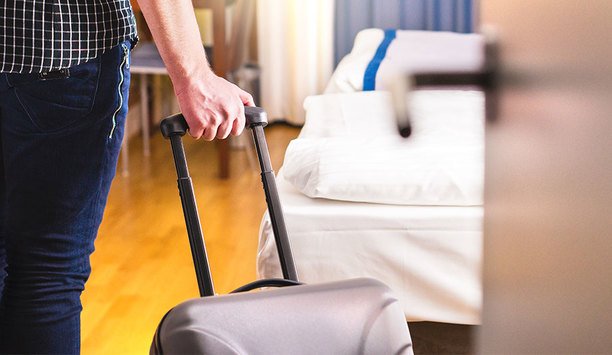
Hotel And Motel Fire Safety
Download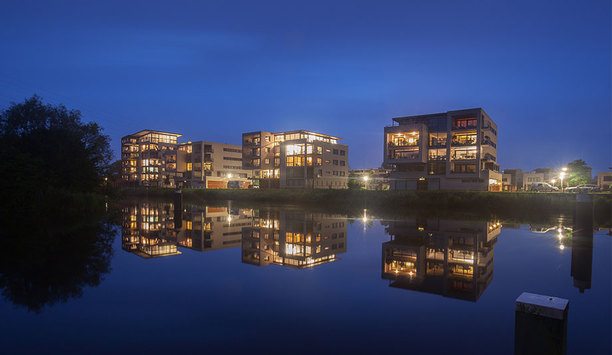
Apartment Fire Safety Tips
Download
Fire Safety Tips For High-rise Apartments
Download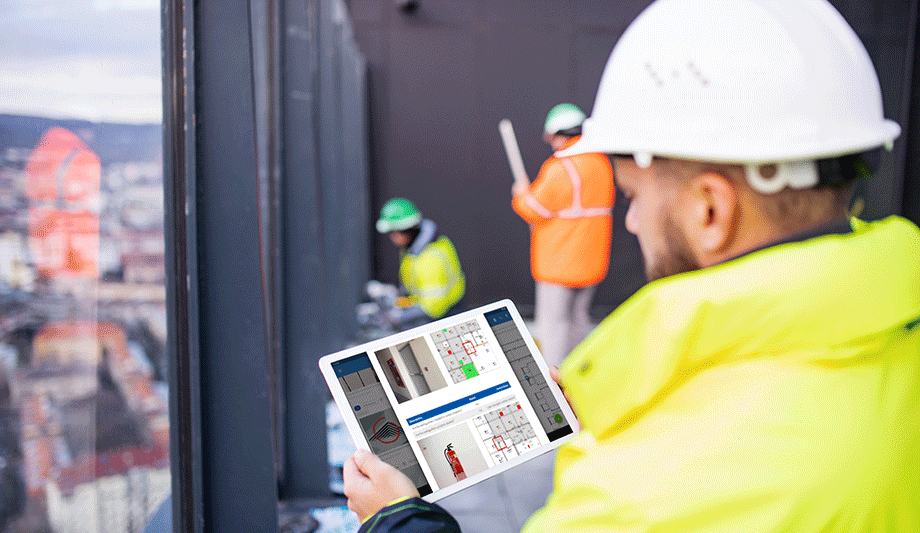
A Digital Platform to Improve Fire Safety Compliance and Inspections
Download
Hotel And Motel Fire Safety
Download
Apartment Fire Safety Tips
Download
Fire Safety Tips For High-rise Apartments
Download
A Digital Platform to Improve Fire Safety Compliance and Inspections
Download
Hotel And Motel Fire Safety
Download
Apartment Fire Safety Tips
Download

Videos
Tall Building Fire Safety: Manufacturers & Suppliers
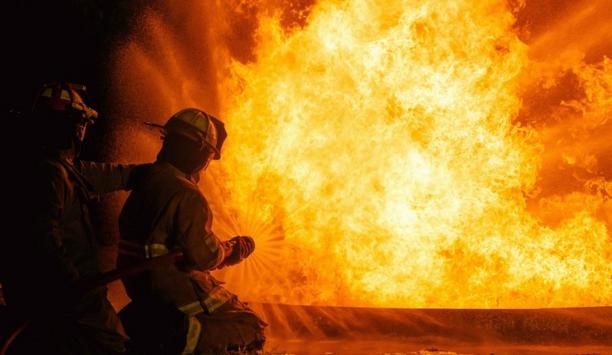
The New Future For Fire Agencies
Download
The Eight Key Trends in Fire Detection in 2023
Download
A Digital Platform to Improve Fire Safety Compliance and Inspections
Download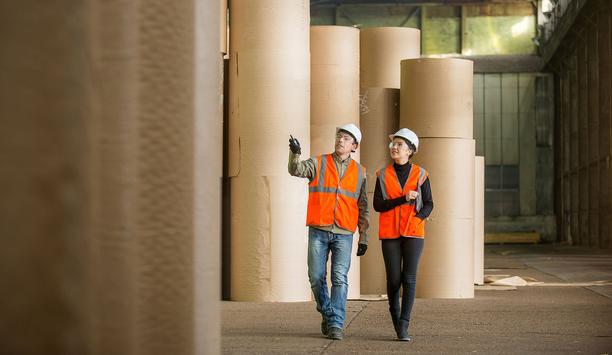
Overcoming the Challenges of Fire Safety in the Paper Industry
Download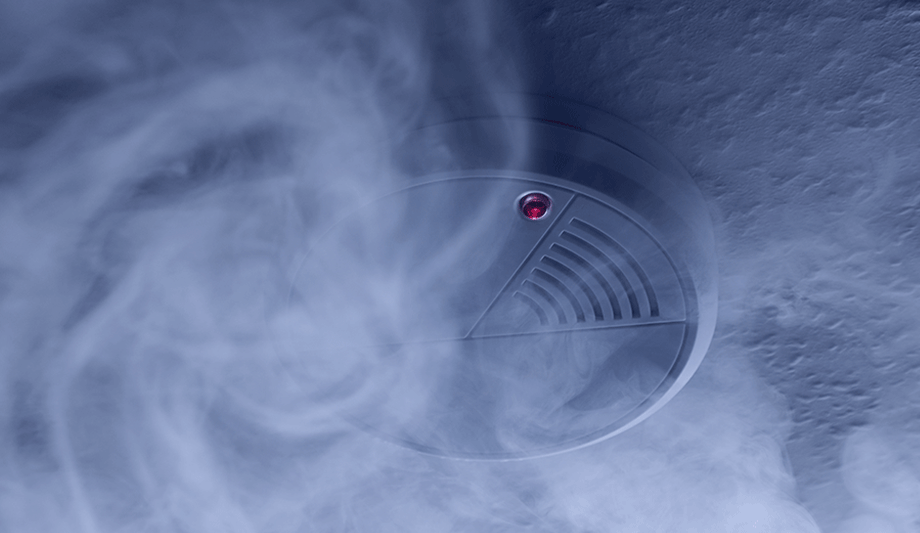
Carbon Monoxide: Creeping Killer Caught In The Act
Download